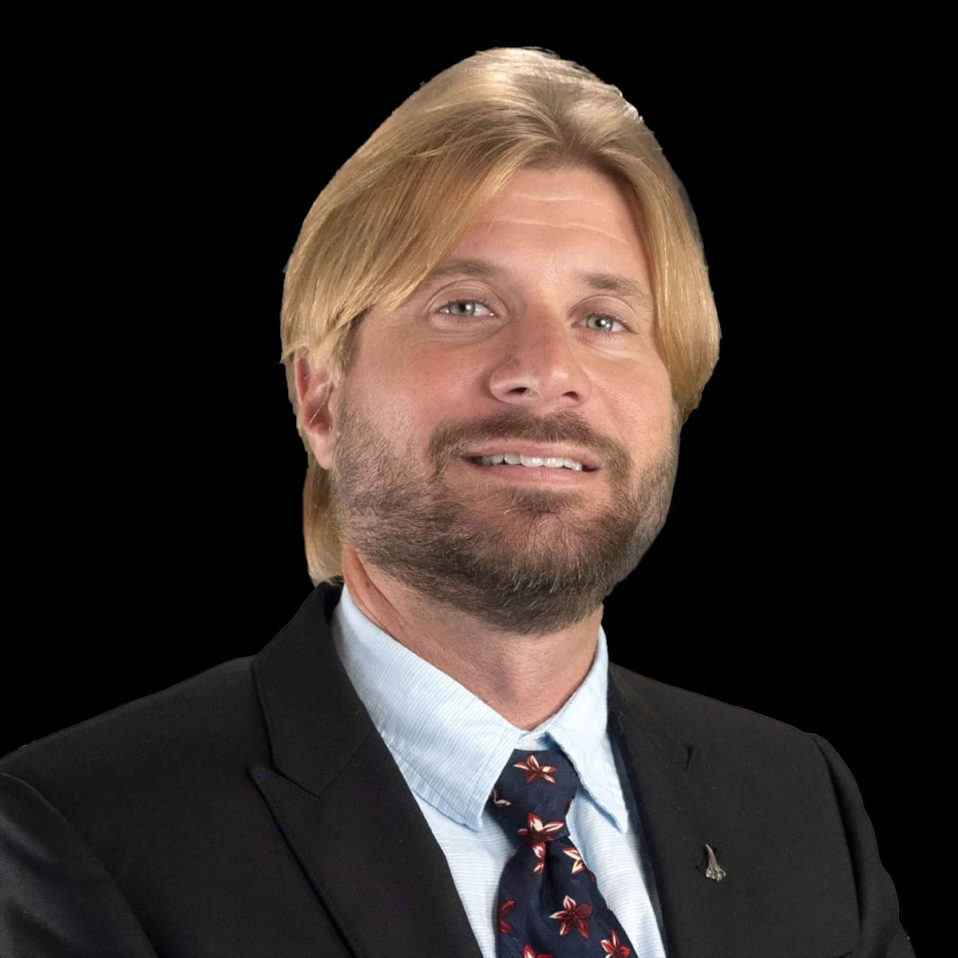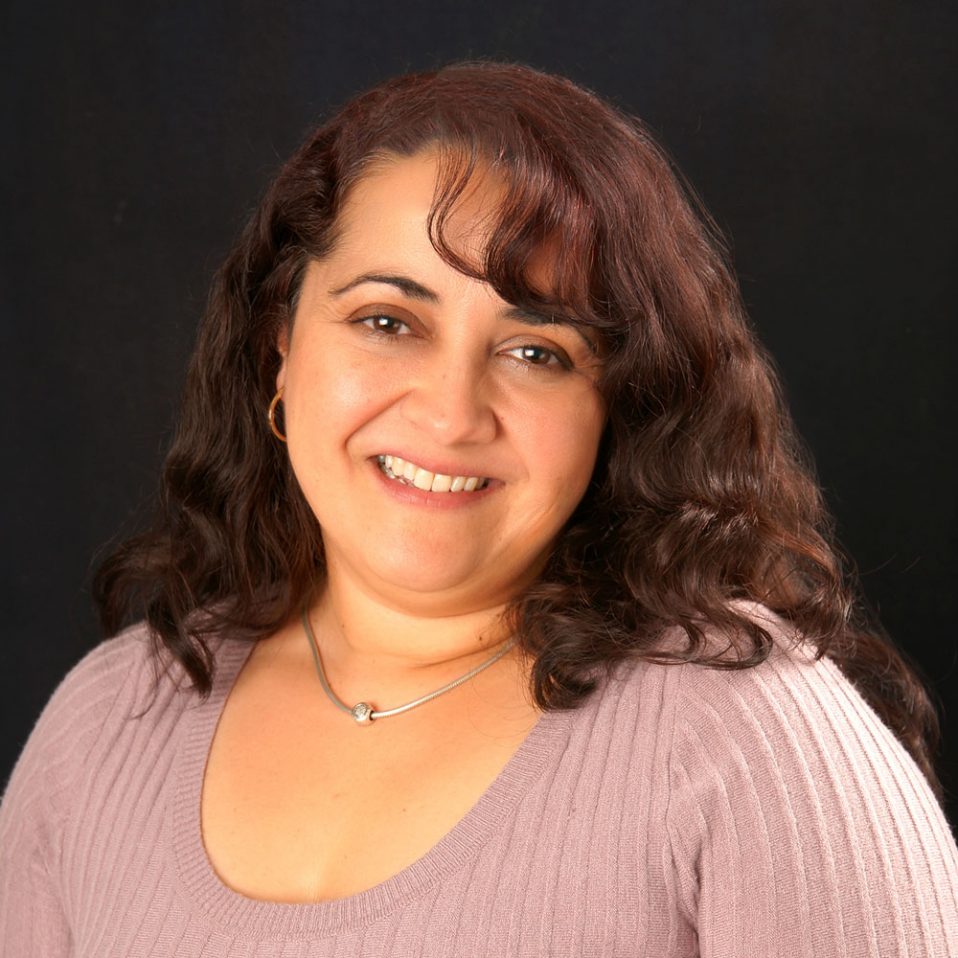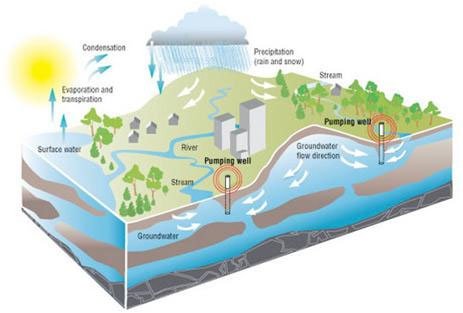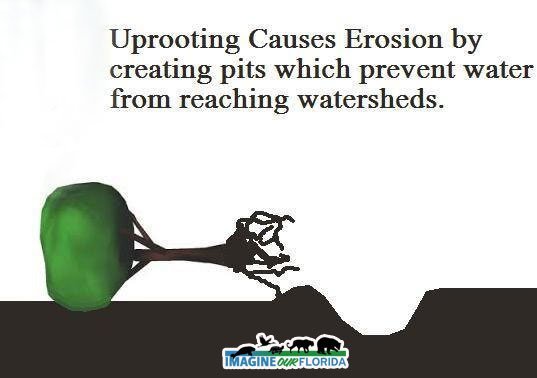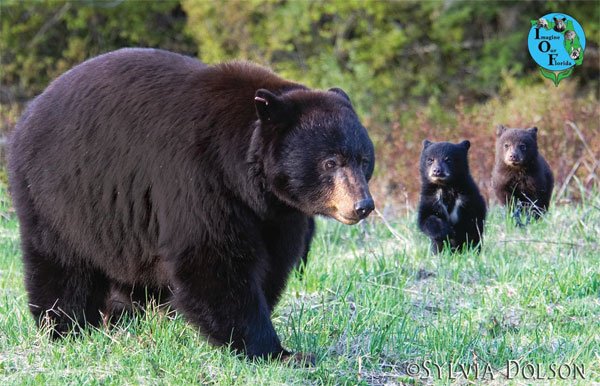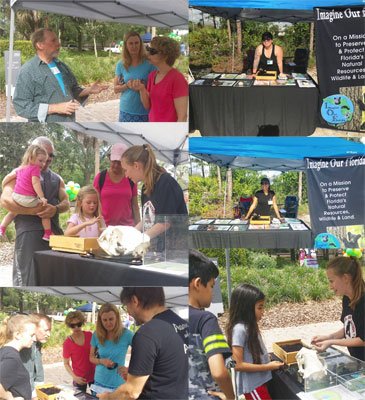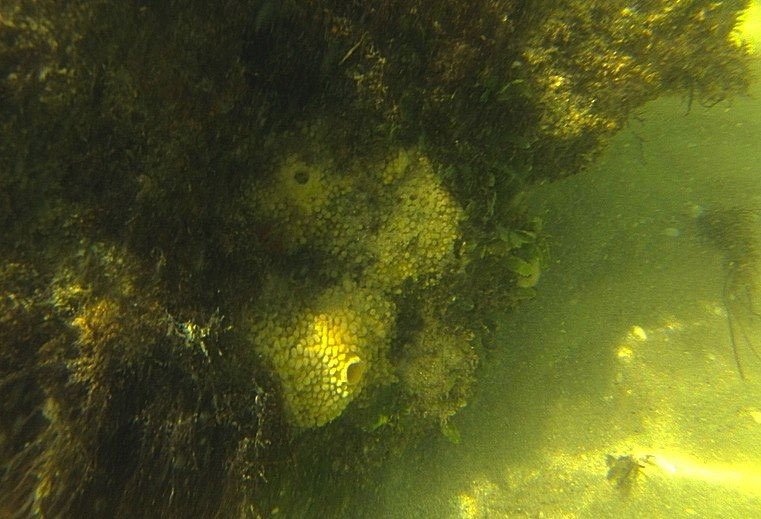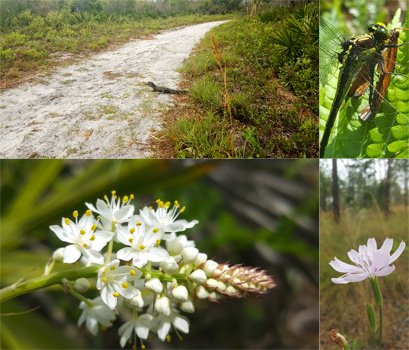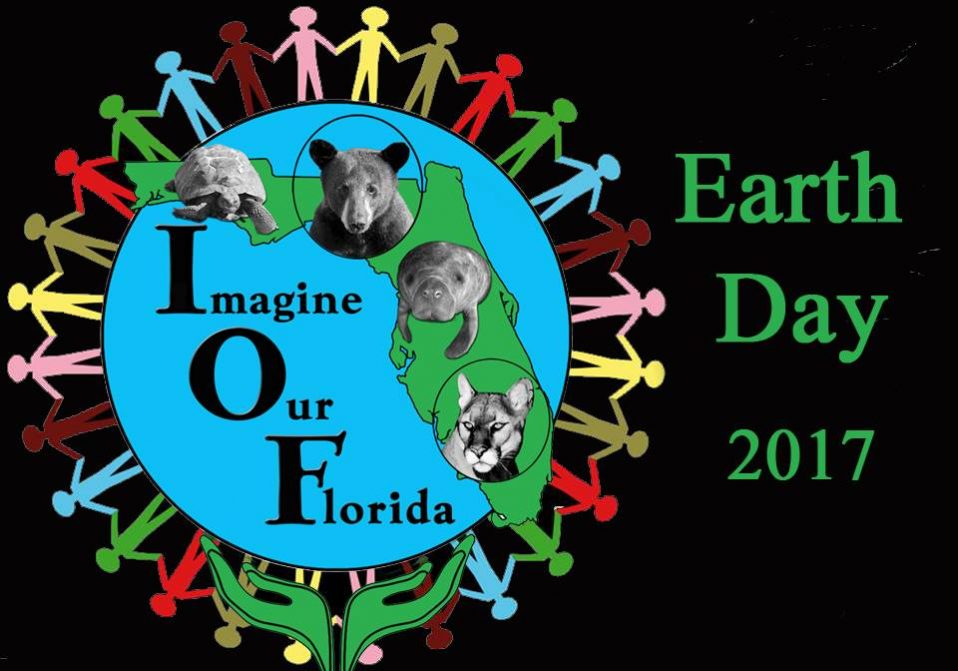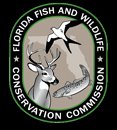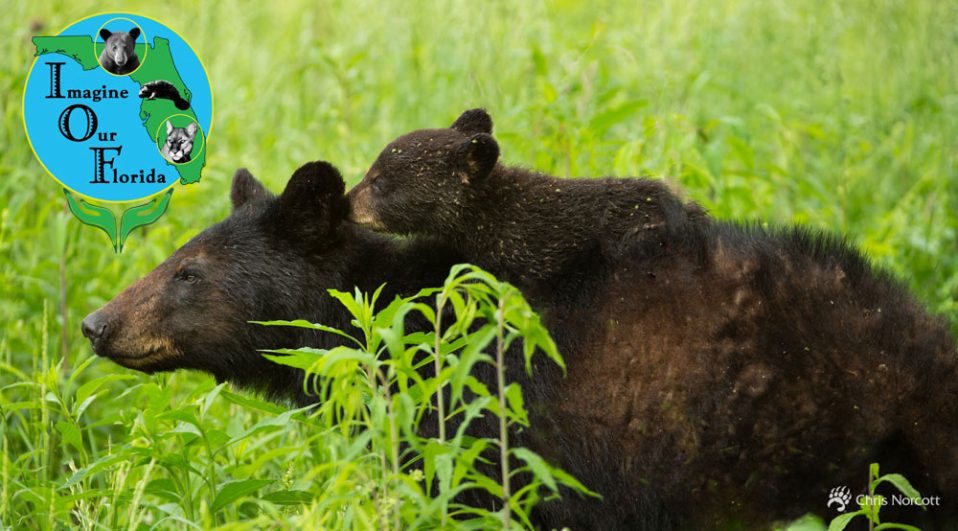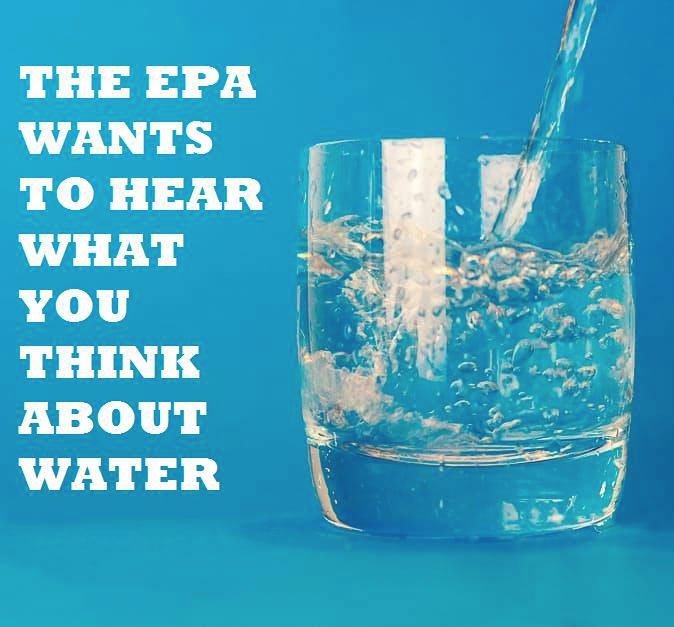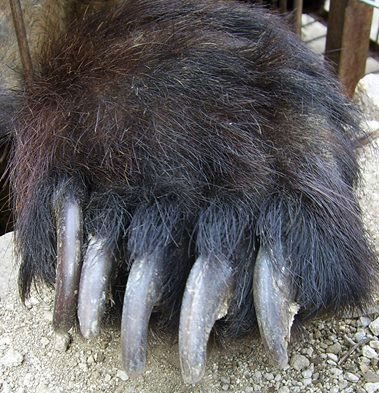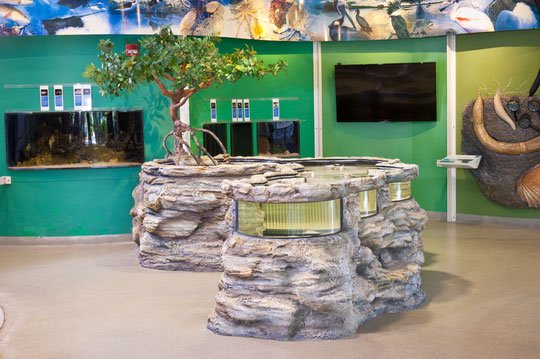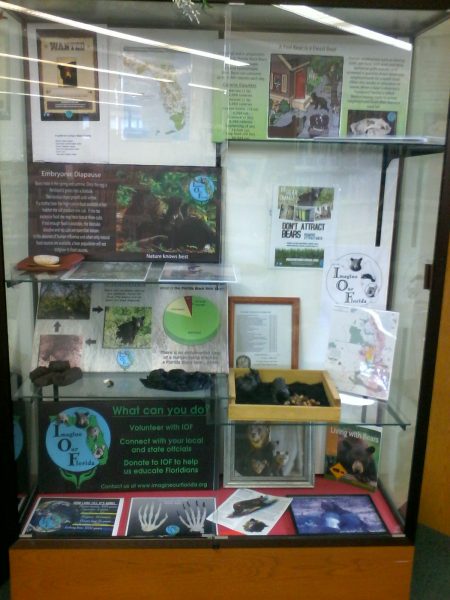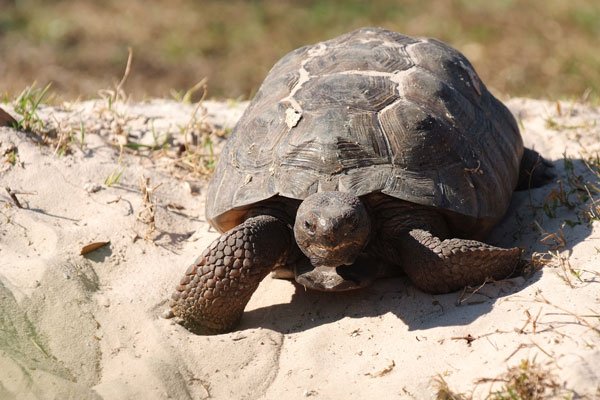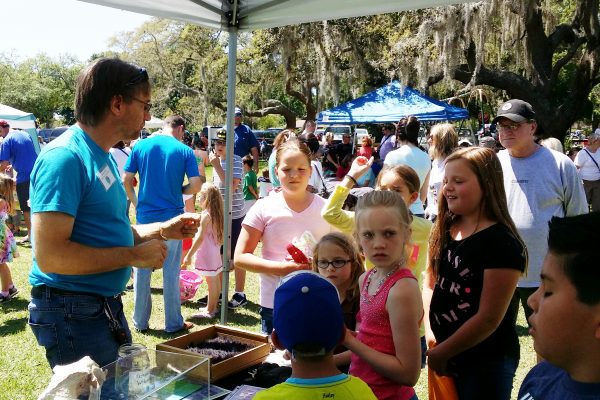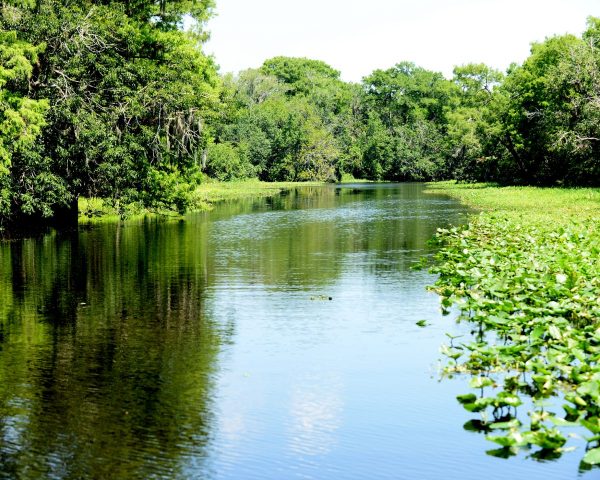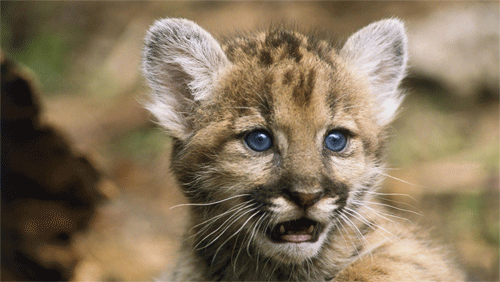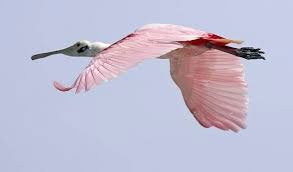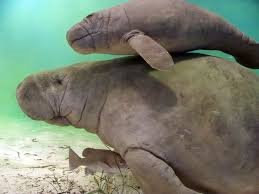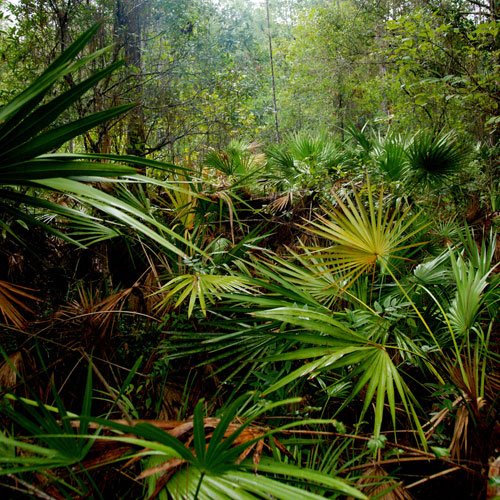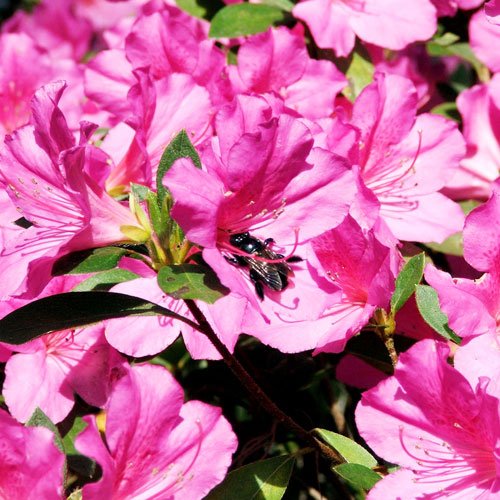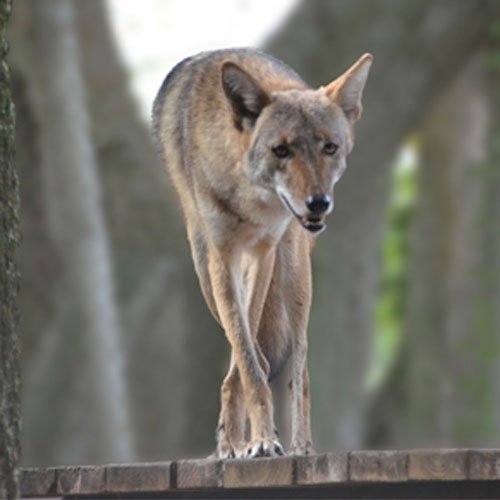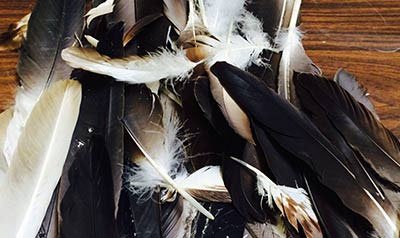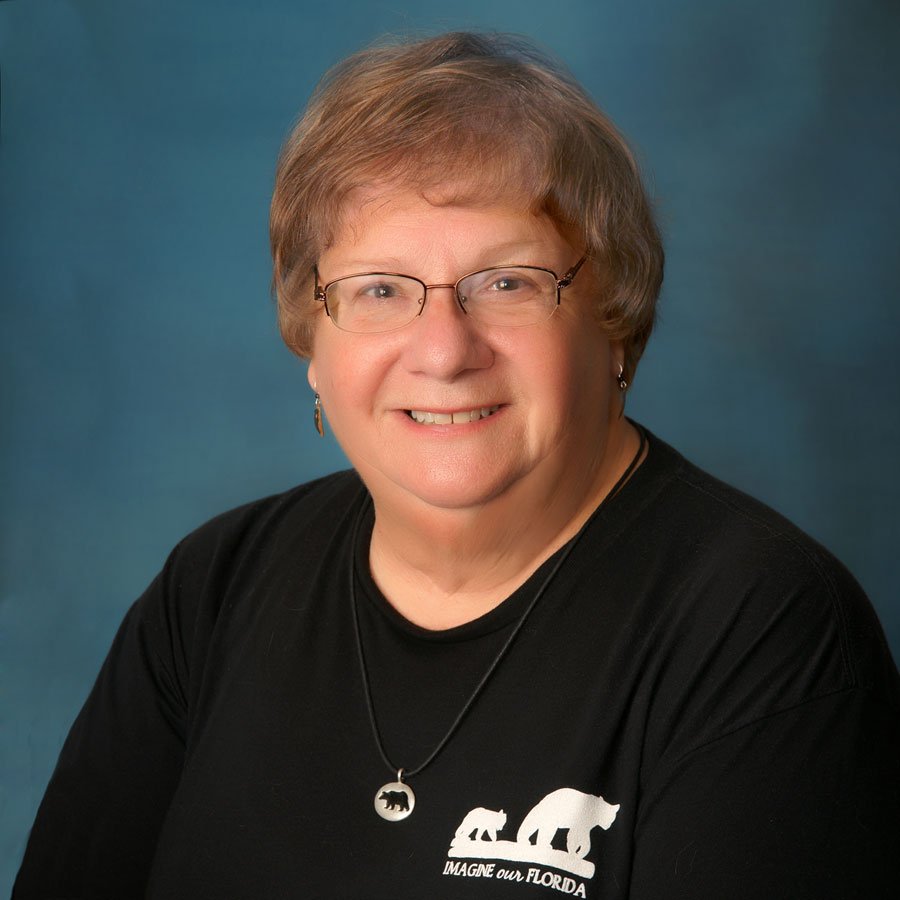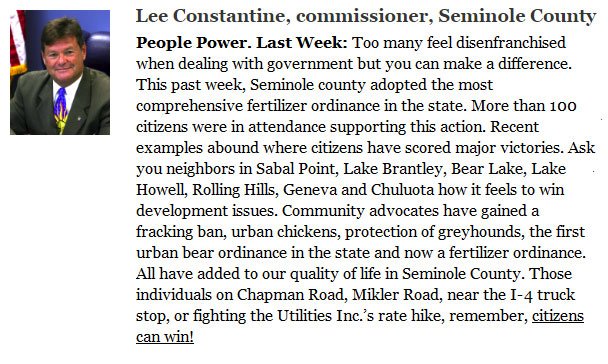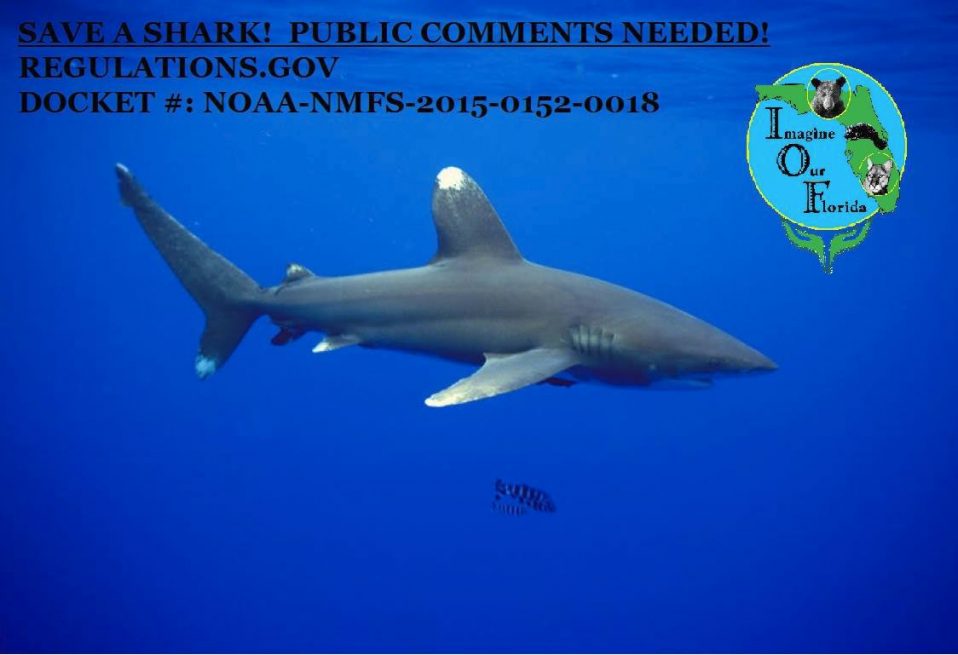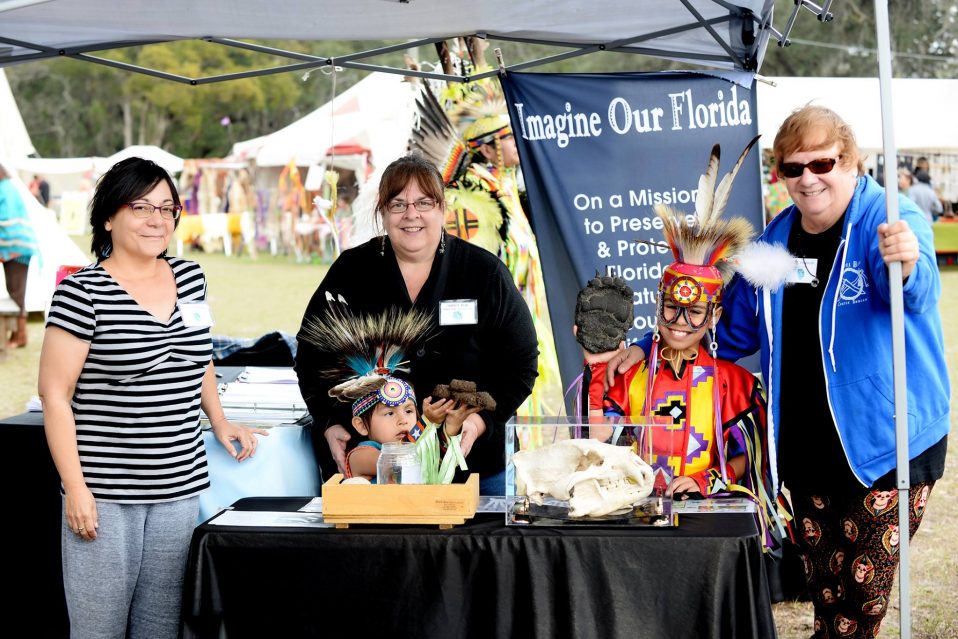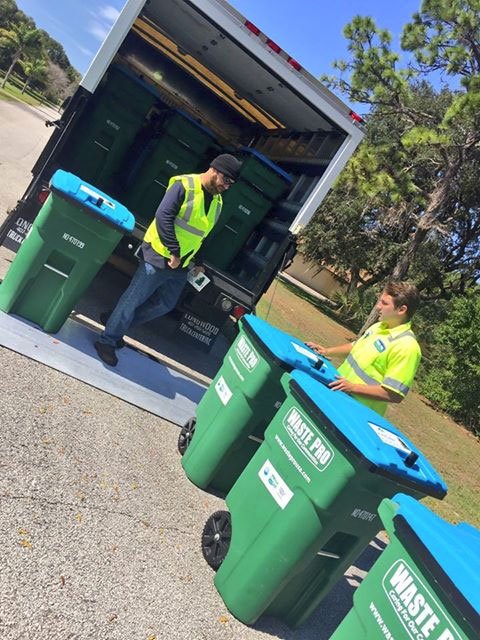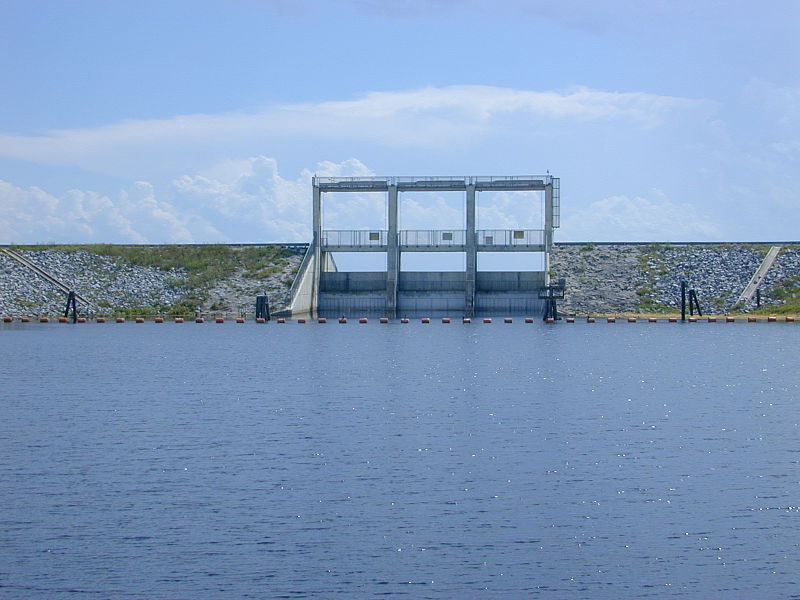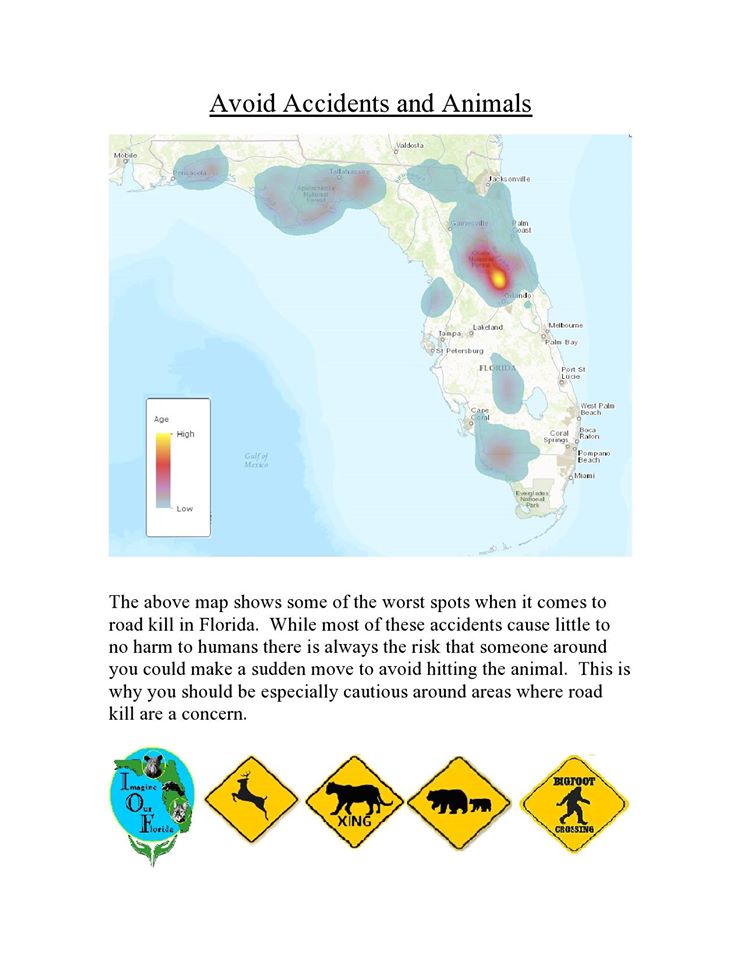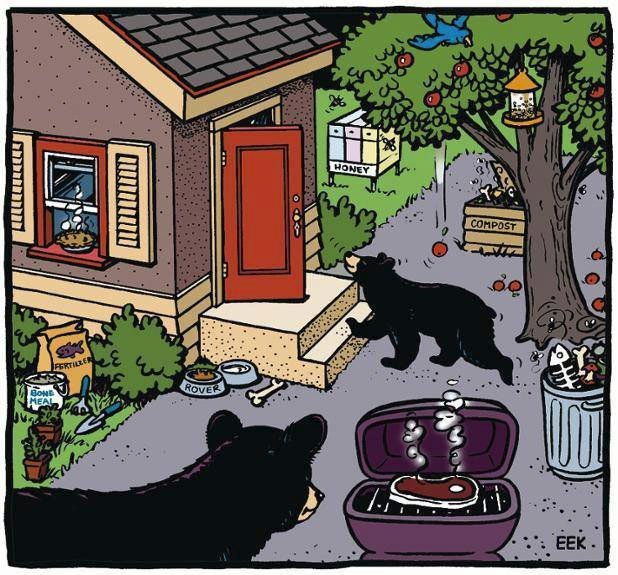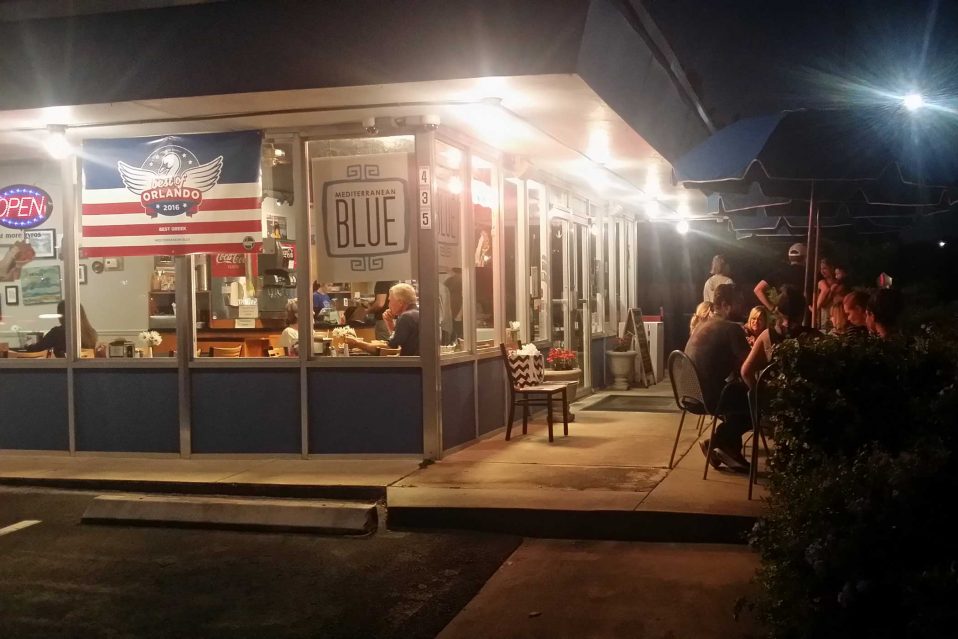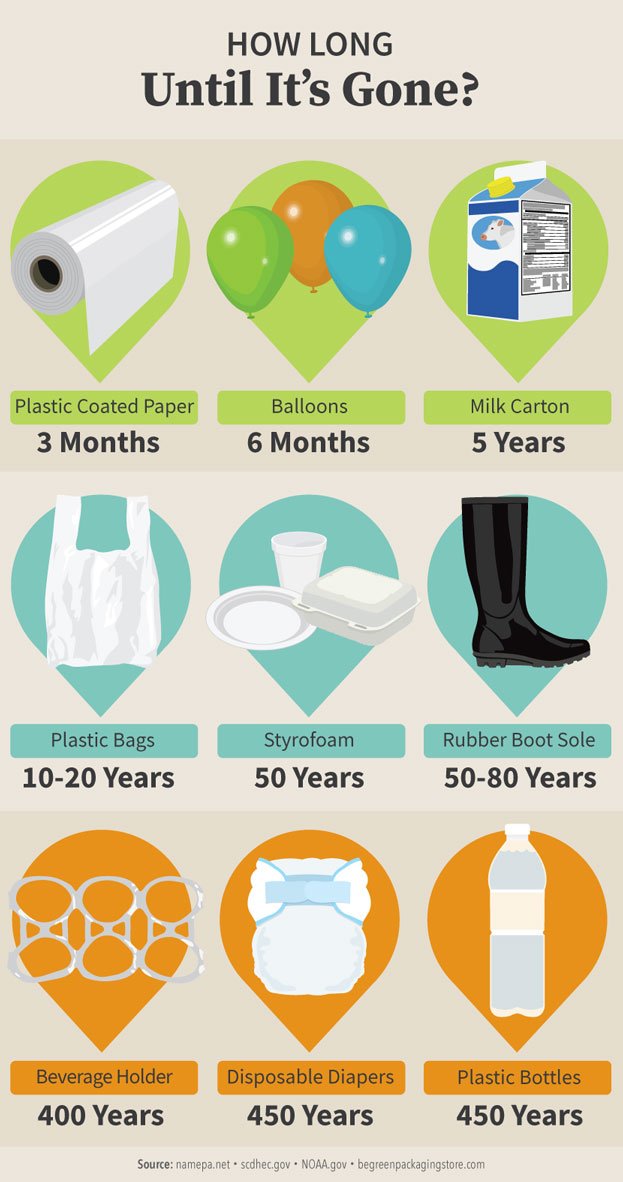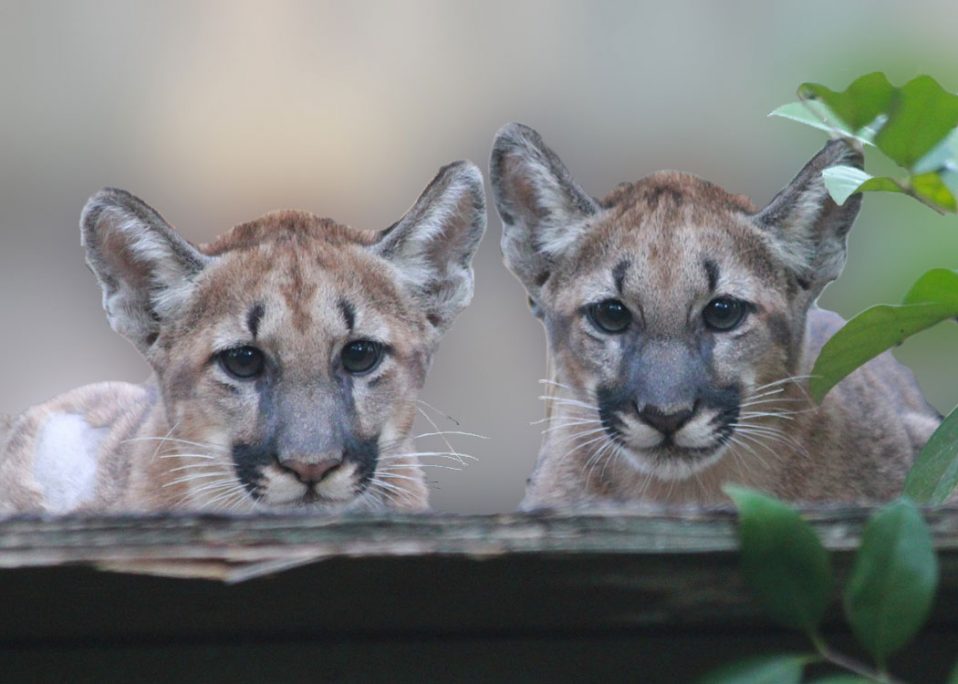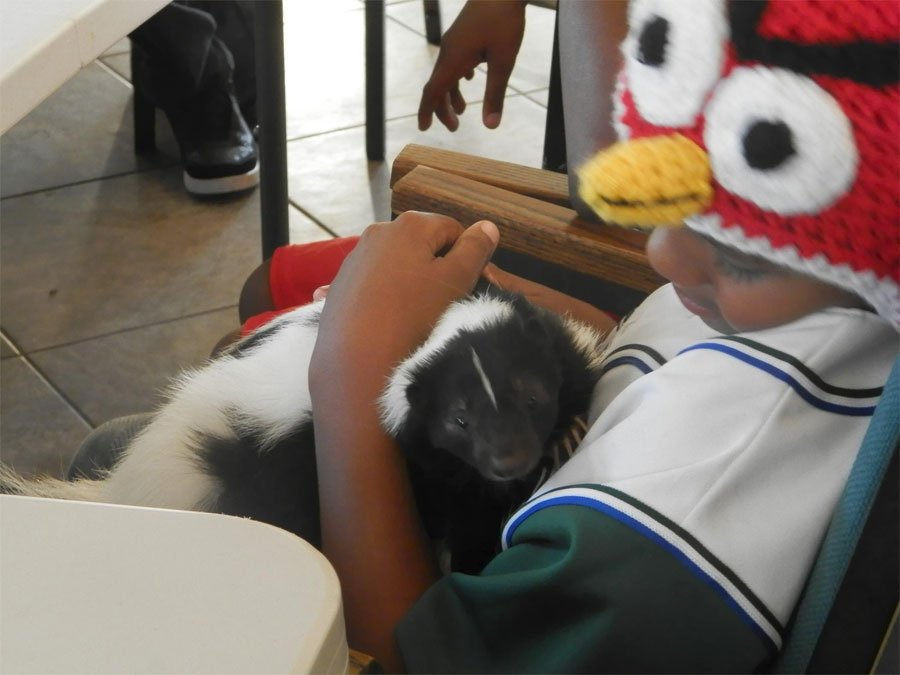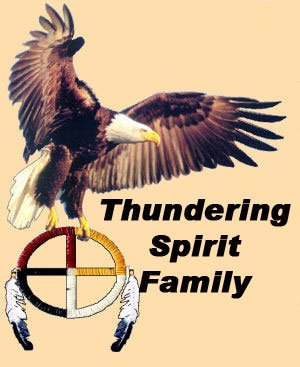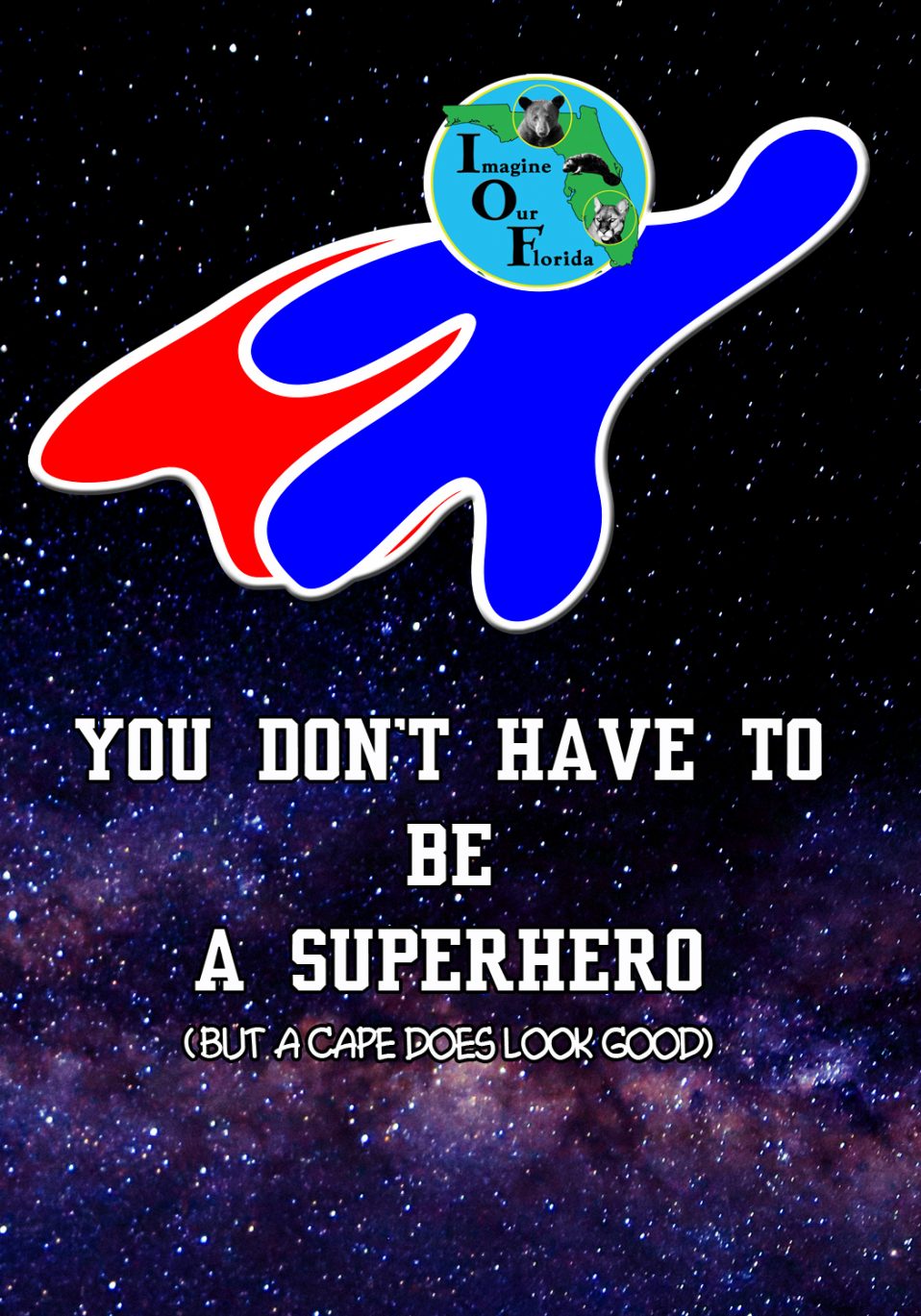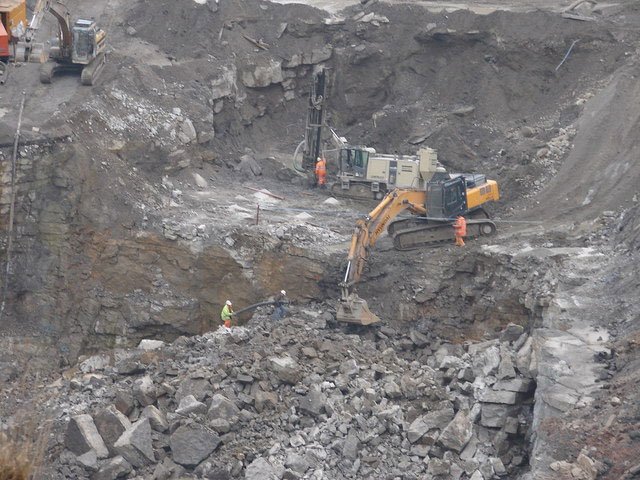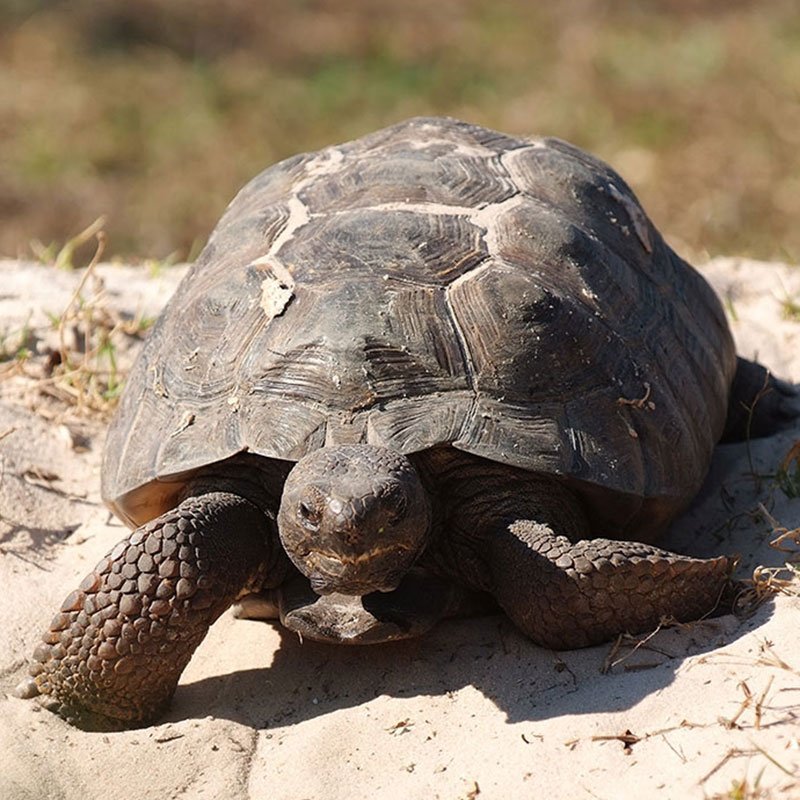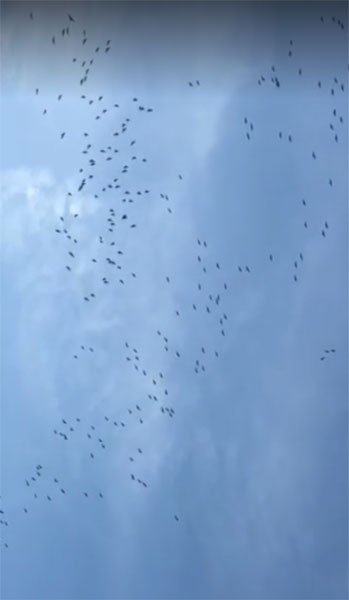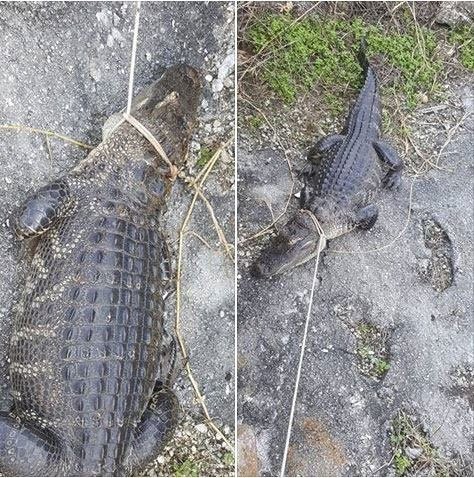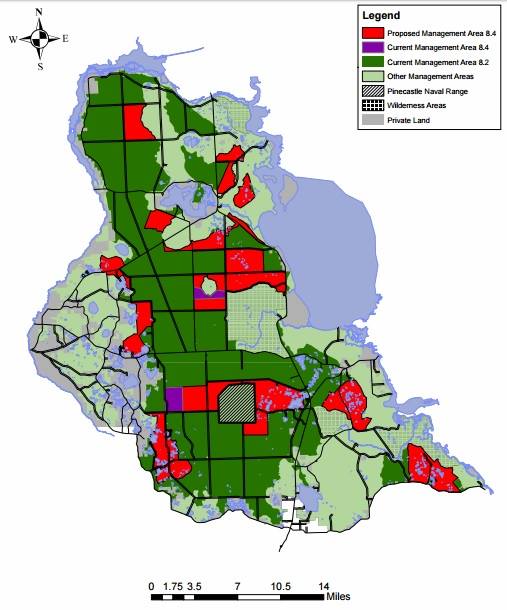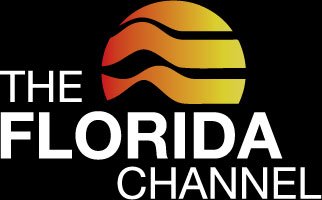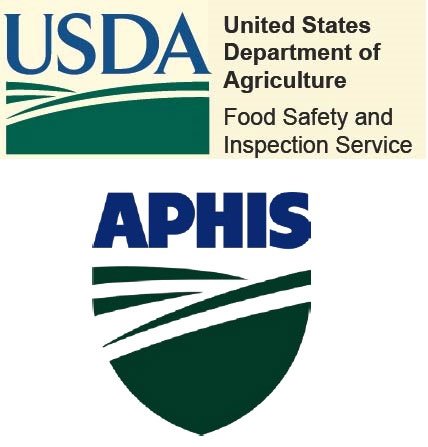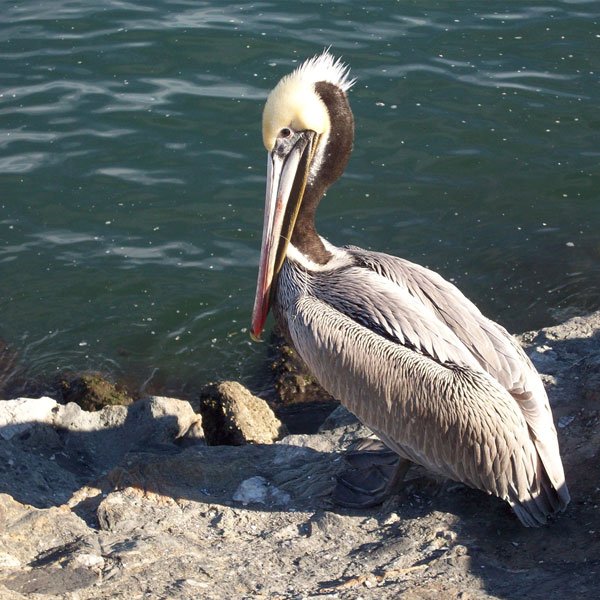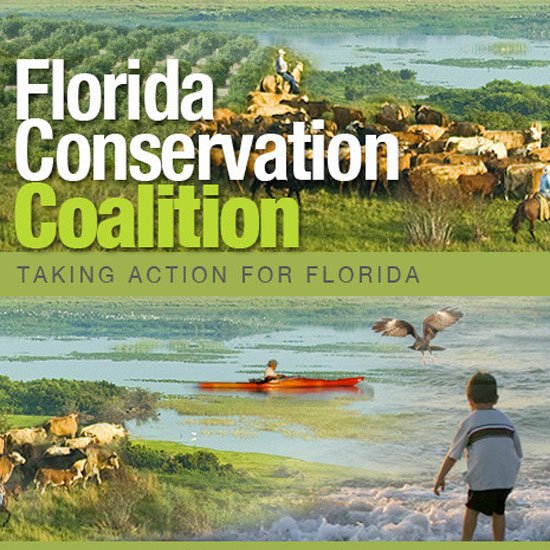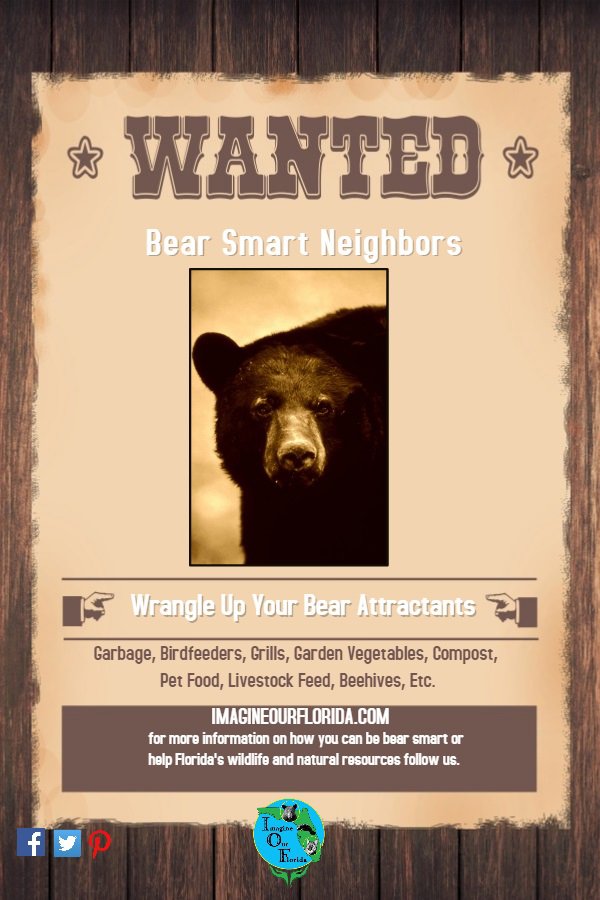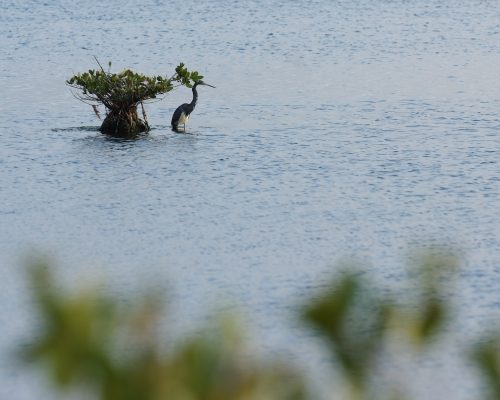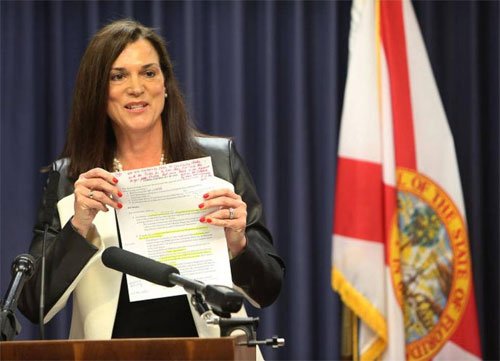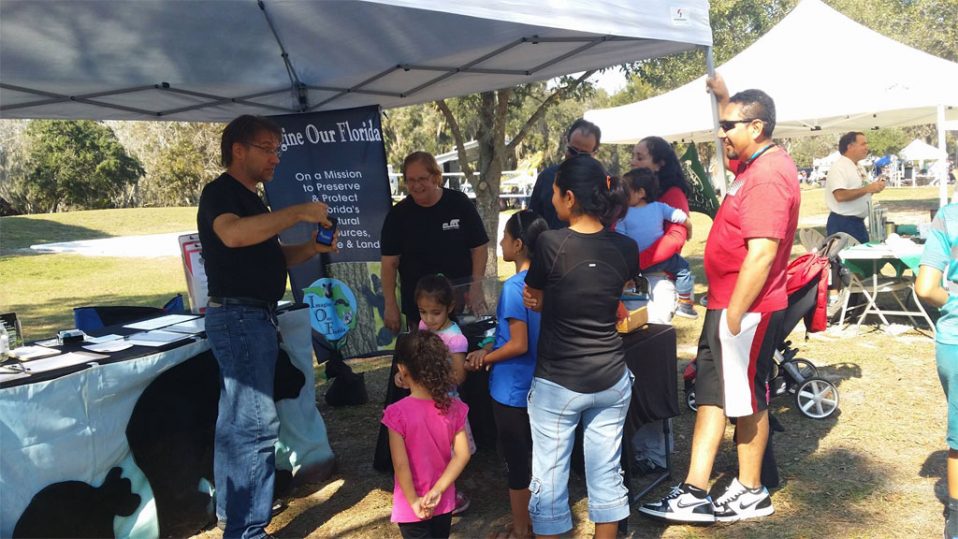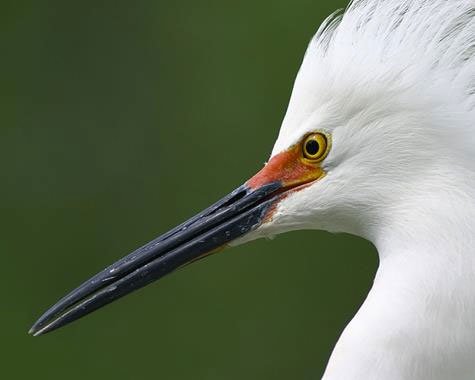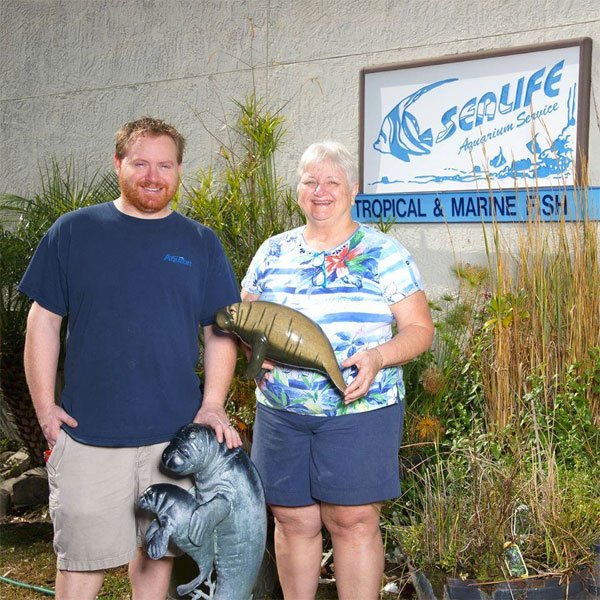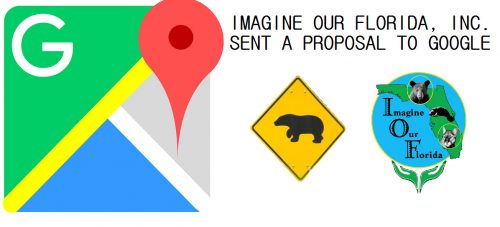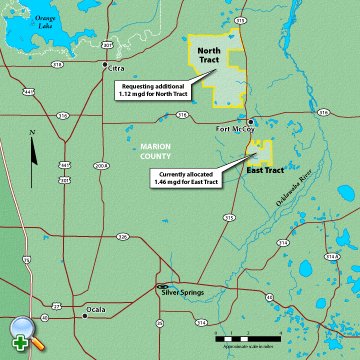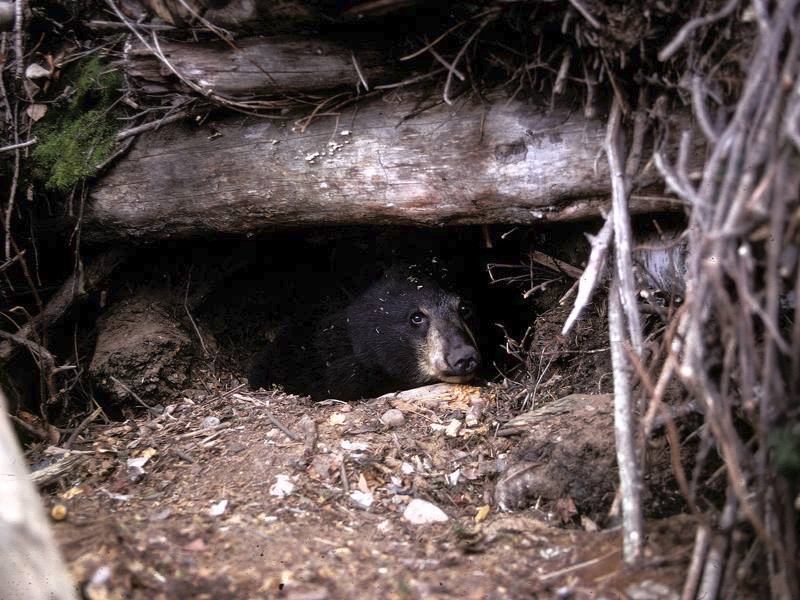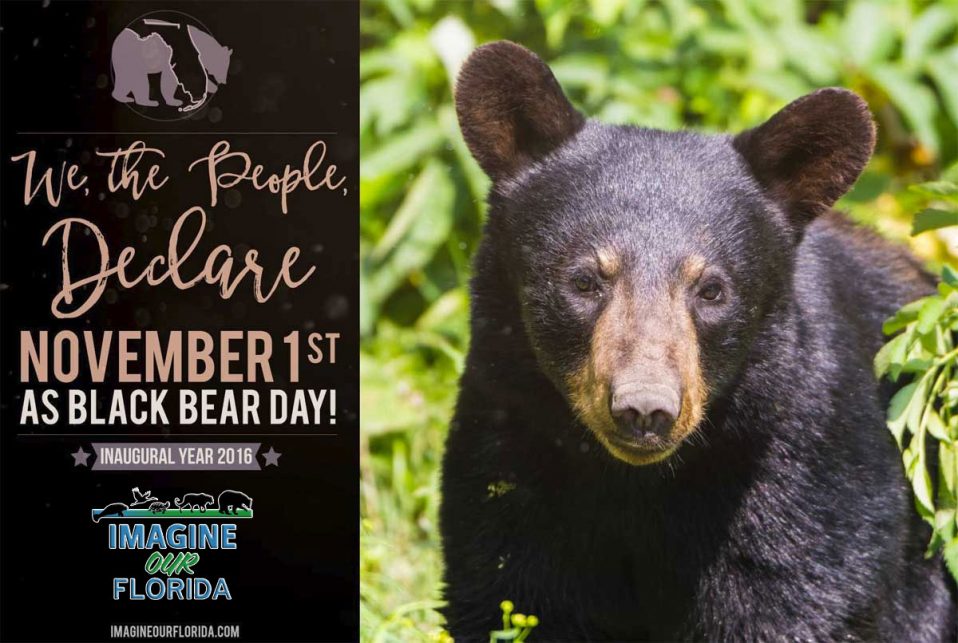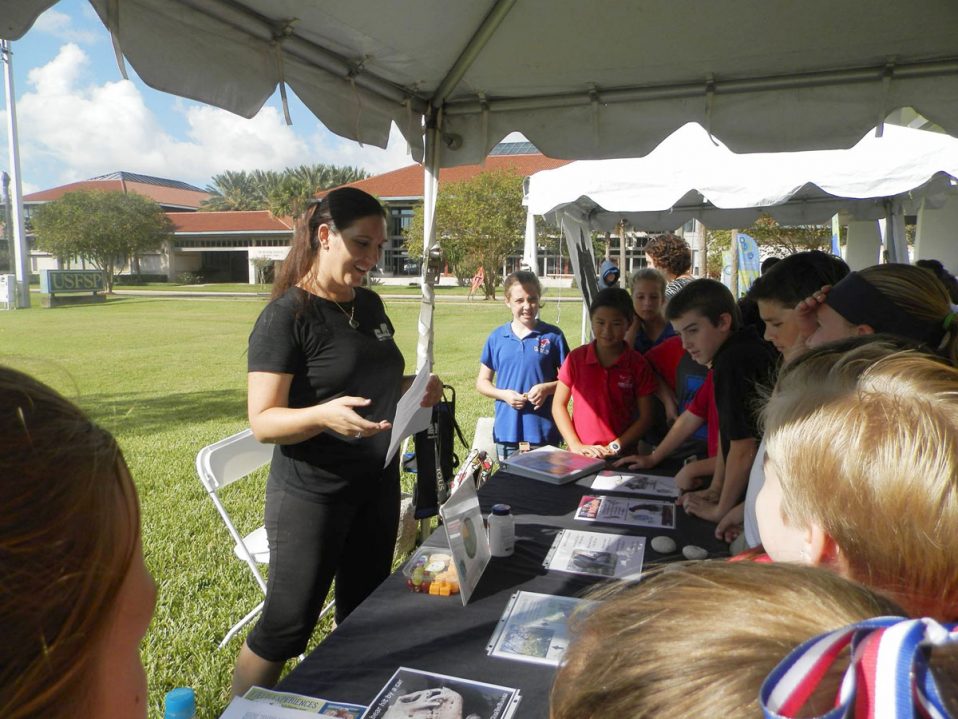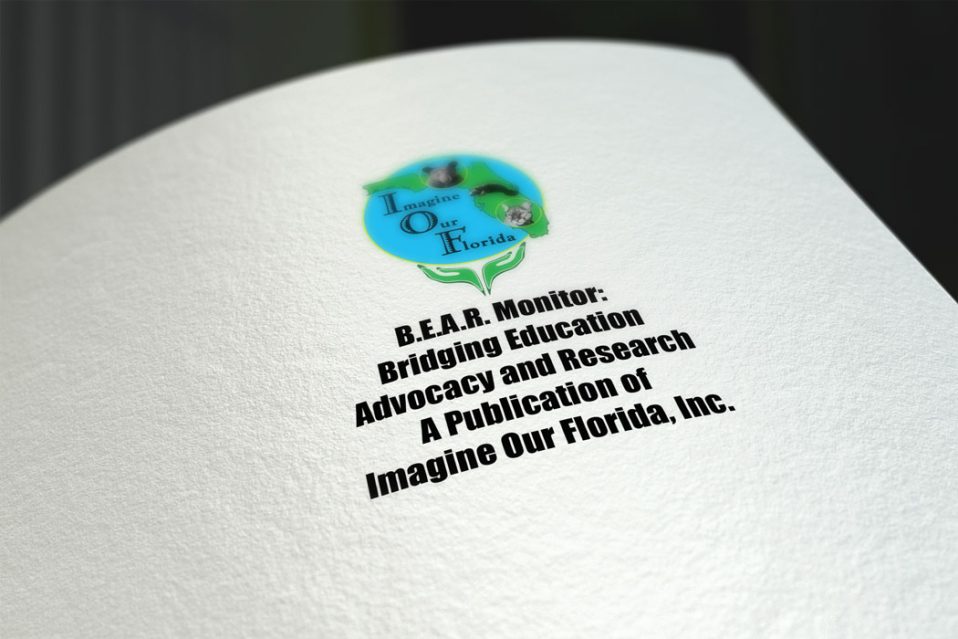Bobby is a native-born Floridian. He grew up in what he considers to be one of the most unique settings in the world,
Ileana Rodriguez-Ramirez Psy.D
South Florida Chair and Educator – Ileana is the only daughter of Cuban immigrants who fled the Communist island in the early 1960’s. Born in California, Ileana moved with her family to Florida in
DonnaLee Hilden
Lead Education Coordinator for Highlands County – Originally from Bryn Athyn Pa, Donnalee has lived in New Jersey at the Weiss Ecology Center. She has previously worked as a school bus driver for 13 years, as an
3 Water Part 3
Let’s take a look at what happens when acidic water enters the aquifer. Acidic water occurs when carbon dioxide and water react to form
1 Water Part 1
Here’s a great video to explain what groundwater is, how it gets there, and why it’s so important
Special thanks to My Favorite Things
Imagine Our Florida Inc, is grateful to our corporate sponsor, My Favorite Things (MTF Stamps) Take a look at the unique pieces you can create on those summer days when it’s too hot to be outside. Check out their facebook page here: https://www.facebook.com/MFTStamps/?pnref=about.overview Click here or on picture to view the website http://www.mftstamps.com/
Movement behavior explains genetic differentiation in american black bears
Cushman, S. A., & Lewis, J. S. (2010). Movement behavior explains genetic differentiation in american black bears. Landscape Ecology, 25(10), 1613-1625. Lauren Zeigler (Understanding of the work above) -IOF Outreach Volunteer Previous studies were done on landscape resistance to test the ability of animals to maintain good gene dispersal and population of different animals. This study is different in that it compares the data collected from landscape connectivity and genetics using movement behaviors. This method collects multiple forms of study on animal behavior along with migratory patterns as well as landscape changes to analyze the mating process in black bears. The study wants to find the ability of black bears to verify previous landscape maps that were existed by using a path-level movement analysis. This study used a specific area to study, used previous landscape genetic analysis, black bear telemetry data, path-level analysis, selection of variables that influenced the black bear movement patterns, creation of a map that showed the landscape resistance factors, and finally used conditional logistic regression. This method had a few subsections for each category. The area of study was in the Purcell mountains of Idaho and was about 1500km of study. While this was in place, the researchers used a previous study of the area to use as a comparison to the path level analysis in this study. To avoid biases in the data, the bears were used in a variety of areas within the parameters for a span of two years and in the time of the largest population of black bears being monitored. The path-analysis was coupled with the landscape variables and resistance factors to accurately trace the path of the bears and then the researchers took into consideration the ecological differences for the movement paths of the bears in that time to find the similarity between the previous map and the map that was now being worked on. The experiment led to the findings that the forest roads were able to be crossed more easily than that of country road or highways. Not only was this proven, but it was found that roads were the most important when considering the movement of black bears with the rate of 95% confidence that the intervals never reached 0. While the relationship between the early seasonal model and the genetic landscape model came out with negative partialling data that led to the similarity or landscape resistance and early seasonal movement. This research was shown to be important on many different levels. The impact of humans on the movement of bears was to be noted as well as noticing the spring seasons impact on bear movement which was found to be the most important time in the time for bear genetic differentiation. Genetic differentiation was created from the mating and dispersal in the black bears during the spring time. This fact is important to take into consideration for the life model of a black bear and the importance of the right scale on how the bears can mate and reproduce. Many black bear subspecies are found to be endangered and this model can provide the data on […]
Dragonfly warming up before getting to work.
Did you know dragonflies inhabited earth before dinosaurs? These amazing arthropods can be found near lakes, ponds, rivers, swamps and marshes. After hatching from eggs, dragonflies spend much of their life as nymphs. In this stage, they breathe through gills located in their anus and feast on tadpoles, worms and small fish. After shedding their skin, the adults crawl onto land. Dragonflies must warm up before setting off to do important work in our ecosystem. You will find them soaking up the sun early in the morning before spending the rest of their day on a search for food. Dragonflies control populations of many insects including those pesky mosquitoes. Known as nature’s helicopter, the wings of a dragonfly work both together and independently. This is why we see incredible aerial feats such as hovering, turns and backward flying. The next time you see a dragonfly, spend a few minutes watching one of nature’s wonderful gifts.
Making Learning FUN
Engaging people of all ages, encouraging critical thinking, answering questions, and of course it involves poop! At Lake Lily Earth Day/Arbor Day. Sending out a special Thank you to IOF’S Advisor Fred Bohler, Directors Dan and Nancy Kon, and High School Educator Dani. Catalina and Stephanie were set up at the Oxbow Eco-Center in Port St Lucie. — Imagine Our Florida, Inc is a science-based educational non profit organization.
A Look at the Effects and Projections of Global Warming in Florida
In a study published last year, “Species-specific responses to climate change and community composition determine future calcification rates of Florida Keys reefs” the effects of Global Warming were tested on four common coral species in Florida. Of the four coral species, three demonstrated damage to calcium carbonate. The fourth did not seem sensitive to the affects. The study did not take into consideration the damage associated with coral bleaching, the process of algae abandoning the reefs and depriving the coral of needed glucose. After running several models it’s projected that by 2100 declines in coral could range from 10%-100%. If CO2 levels are reduced coral decline would likely be below 20%. How can you help? Here are some ways you can help reduce your carbon footprint at home, work, or on the road. Imagine Our Florida, Inc. is a drama free, Science-Based Educational Organization https://archive.epa.gov/…/whatyoucando_reducecarbonpollutio…
Wekiwa State Park
Wekiwa Springs State Park, which is located in Seminole county, holds a wonderful array of habitats. Many go simply for a swim in the beautiful spring. But there are so many miles of well maintained trails to explore. These are some photos taken today from mainly longleaf pine and wiregrass ecosystems as well as scrub ecosystems. Please, do not forget to enjoy the beauty of the small things. Imagine Our Florida, Inc. is a drama free, Science-Based Educational Organization
Earth Day weekend update
This weekend has been busy for all of our teams throughout Florida. Melbourne, St. Petersburg, Ocala, Orlando, Pinecrest and this weekend IOF teams will be in Maitland and St. Lucie We are looking for more volunteers in towns and cities all over Florida. If you are interested in educating people of all ages about Florida’s wildlife, clean water and natural resources click the contact icon and let us know how you would like to help.
Earth Day and the FWC
As we celebrated Earth Day and the recent win for the bears, please take a moment to contact the FWC commissioners. Thank them for the 2 year break from bear hunting. Thank them for stepping back and looking at science. Kindness matters. Respect gains respect. Remember, they’re receiving tons of negative responses from the people they angered with their decision. Thank you all for helping spread a little kindness this Earth Day. http://myfwc.com/cont…/fwc-staff/senior-staff/commissioners/
NO FLORIDA BEAR HUNT FOR 2017
—–NO BEAR HUNT 2017—- In an unexpected move the commission voted against a 2017 bear hunt. Let’s keep up the hard work on education and advocating for bear ordinances and preventing attractants. Please contact our FWC commissioners and express your thoughts. One email goes to all of the commissioners here.
Important Environmental Bills in Committee
The environmental Preservation and Conservation committee will hold it’s last session meeting April 19,2017. SB 1228 would add additional penalties for anyone possessing marine turtles, hatchlings, eggs, parts of nests, etc. https://static-s3.lobbytools.com/bills/2017/pdf/1228.pdf SB 1304 would take multiple measures to reduce human-bear conflicts and would focus on regulating bear habitat. http://www.flsenate.gov/Session/Bill/2017/491/BillText/…/PDF SB 1278 would allow state funds to be allotted to petroleum storage facilities who claim damages due to biodiesel or ethanol. https://static-s3.lobbytools.com/bills/2017/pdf/1278.pdf SB 1748 would require on site sewage treatment and disposal systems to be inspected prior to the property being sold. This bill would protect soil quality and water sources. https://static-s3.lobbytools.com/bills/2017/pdf/1278.pdf We encourage you to contact the committee members to let then know how you feel about these issues. A list of committee members with links to contact them can be found here. https://www.flsenate.gov/Committees/Show/EP
The EPA is Seeking Important Input
The EPA has regulating air and water quality since December 2, 1970. Since then they have provided information to the public regarding the air and water quality in their area. They conduct research, regulate chemicals and their disposal, and take legal action to protect the health of the citizens and the environment. Here in Florida they have been tracking sea level rise. They have provided students with scholarships in STEM fields. They have monitored phosphorus levels in the Everglades. In 2015 they helped to charge two individuals with who poisoned wildlife and hunting dogs. This is only a snapshot of what the EPA does. The EPA is now seeking public input on regulations that threaten to loosen regulations that keep our state safe. One regulation even involves, “Promoting Energy Independence and Economic Growth, directs the EPA to review the Clean Power Plan, related rules and the NSPS for Oil and Gas, and all agencies to review existing regulations, orders, guidance documents and policies that potentially burden the development or use of domestically produced energy resources.” This is counter productive to the goal of the EPA and it’s intended purpose. Please, send your comments to Laws-Regs@epa.gov and share how much you appreciate the hard work the EPA has done. You can also make public comments at this link. https://www.regulations.gov/comment… For more information can be found at the link below. https://www.epa.gov/laws-regulations/regulatory-reform
Our Bears Need Us Again
—Our Bears Need Us Again—— With Bears on the agenda at the upcoming FWC meeting, NOW is the time to raise your voice about a potential Bear Hunt. The following article will help you do just that. There is a special section for speaking at the FWC meeting. Do what you can: Attend the meeting and bring your friends and family. https://www.facebook.com/events/1646437622319731/ Email and ask your friends and families to do the same. We all care about our bears.http://myfwc.com/cont…/fwc-staff/senior-staff/commissioners/ Call and let the commissioners know how you feel about Bear Hunting: 850-488-4676 Now is not the time to remain silent. Our bears are counting on YOU. https://www.imagineourflorida.org/advocacy/
Rookery Bay National Estuarine Research Reserve update
—–Florida Department of Environmental Protection—- NAPLES, Fla. – Rookery Bay National Estuarine Research Reserve has unveiled a new, 180-gallon marine life exhibit at the Rookery Bay Environmental Learning Center. More than a dozen species of marine animals are now on display and available for guests of all ages to discover during regular visiting hours. “The opportunity to observe and interact with a pygmy sea cucumber, horseshoe crab or lightning whelk provides guests with an intimate connection to our natural environment,” said Keith Laakkonen, Reserve director. “This hands-on, interpretive tank will provide an immersive experience for thousands of students and visitors.” The new exhibit features a partitioned, state-of-the-art flow-through system, which improves water quality and enables visitors to interact with animals throughout the day. The imaginative, Florida west coast-themed tank includes live sand on the bottom and view-through windows along the side, adding opportunities for guests to observe the diversity of species in the exhibit from different angles. The 180-gallon display is designed to look and feel like Rookery Bay Reserve’s natural environment with detailed rock formations and a mangrove-themed overflow box. In addition to self-guided engagement with these animals, docent-led programs will also be scheduled throughout the day. “As we celebrate 40 years of coastal conservation we remain committed to bringing new and improved opportunities to build local knowledge and respect for our beaches, mangrove forests and estuarine waters. The more engaged our community members and visitors are, the more likely we are to appreciate, enjoy and protect this remarkable ecosystem for future generations,” said Laakkonen. The Rookery Bay Environmental Learning Center is open Monday through Friday from 9 a.m. to 4 p.m. and is also open on Saturdays through the end of April. Admission is $5 for adults, $3 for youth 6 to 12 and free for Friends of Rookery Bay members and children under 6. The Environmental Learning Center is located at 300 Tower Road, off Collier Boulevard between Naples and Marco Island. About Rookery Bay Research Reserve Rookery Bay National Estuarine Research Reserve encompasses 110,000 acres of coastal lands and waters and is managed by the Florida Department of Environmental Protection’s Coastal Office in partnership with NOAA. Its mission is to provide a basis for informed stewardship of estuaries in Southwest Florida through research and education. For more information, visit www.dep.state.fl.us/coastal, www.nerrs.noaa.gov or www.rookerybay.org. https://content.govdelivery.com/accounts/…/bulletins/18fad06 https://content.govdelivery.com/accounts/…/bulletins/18fad06
IOF south central team has made IOF official in Highlands County
Imagine Our Florida, Inc. is proud to present our library display at Lake Placid Public Library in Highlands county. Be sure to stop by and learn about our bears and how they will regulate their own population as long as humans let them. Thank you Donnalee Hilden for creating this incredible teaching display! Lake Placid Public Library 205 W Interlake Blvd Lake Placid, Florida 33852
Gopherus polyphemus
The gopher tortoise (Gopherus polyphemus) is an amazing resident of the state of Florida. Considered a Keystone species, over 400 species use the gopher tortoise burrows. They are a terrestrial (land dwelling) species, occupying dry, well draining land in various habitats. It takes 18-25 years for gopher tortoises to become sexually mature and they can live for more than 60 years. If you find a gopher tortoise crossing the road, it is ok to stop and assist them. Place them off the side of the road in the direction they were traveling. DO NOT RELOCATE A TORTOISE! They have a very strong homing instinct and will wander to find their home range. The survival rate of tortoises relocated is very low. Gopher tortoises also have an amazing ability to heal themselves so if you find an injured tortoise, often the best thing to do is place them near their burrow so they can return home and heal. Keep an eye out or more detailed information on this iconic Florida species in the upcoming months!
Just another reason IOF educates at events of all kinds
What a beautiful day to connect with the children of Wekiva and show them how they can coexist with our bears! Every single adult was horrified to learn there may be another bear hunt. Be sure to talk to your friends and family about what they can do. Come to the FWC meeting and make your voice heard. (Event in the comments) Can’t make it? As a concerned citizen, let FWC know how you feel about our black bears and black bear hunts. Call 850-488-4676 Be sure to follow up with an email to the commissioners: http://myfwc.com/cont…/fwc-staff/senior-staff/commissioners/
The Japanese practice of ‘forest bathing’ is scientifically proven to be good for you
Science proves again why humans need forests. When was the last time you connected with our wild spaces? https://www.weforum.org/…/the-japanese-practice-of-forest-b…
Climate Change and The Florida Panther
– Laura Betts B.E.A.R. Monitor Guest Columnist 2016 was the 40th consecutive year with a global temperature above the 20th-century average. Over 97% of scientists agree that climate change is happening, and caused by human activities primarily burning fossil fuels. Threats to Florida include increased hurricane intensity, a temperature increase of nearly 3°F and sea level rise of 1 to 4 feet by 2100. Florida is home to 50 endangered species. Scientists predict the Florida panther may go extinct because of loss of habitat due to sea level rise if rapid conservation actions are not taken to establish populations to the north. Planning should include wildlife corridors that link wildlife populations throughout Florida and educate people how to live safely with wildlife if we plan on saving our endangered species.
Imagine Our Florida, Inc. has reached Silver Level with GuideStar
Imagine Our Florida, Inc. received the GuideStar Nonprofit Profile Silver level logo, a leading symbol of transparency and accountability provided by GuideStar, the world’s largest source of information on nonprofits. The logo demonstrates Imagine Our Florida’s deep commitment to nonprofit transparency and accountability. In order to be awarded the Silver logo, Imagine Our Florida, Inc. had to fill out every required field of our nonprofit profile on www.guidestar.org for that level of participation. We hope you will check us out and tell us what you think: Imagine Our Florida’s GuideStar Profile
Julia Sable PhD, MFA
Julia Sable, PhD, MFA Julia Sable is a science communicator and educator with ten years of experience working in science museums.
Florida Panther, A Love Story
With gratitude to Jay for sharing this educational video with IOF. Be sure to check out his website for more images of our beloved state. http://www.jaystatonphotography.com/ https://youtu.be/Fx-Mi69bMMg
36 Eye-opening Facts about Water
1. The average human body is made of 50 to 65 percent water. 2. Newborn babies are made up of 78 percent water. 3. A gallon of water weighs
Department of Environmental Protection does not just make rules
The Department of Environmental Protection does not just make rules. They provide needed funding to communities to protect Florida’s water for all of us. https://content.govdelivery.com/accounts/…/bulletins/18c170c
Earth Hour
Earthy hour is this Saturday at 8:30 pm. Please participate if you can! Thank you! https://www.earthhour.org/
This bird has something to say about Florida Bay — and it’s not good – Miami Herald
http://www.miamiherald.com/…/environm…/article139196198.html
Manatees and their babies
On March 21, 2017 a mother manatee was seen swimming the waters of Pinellas County, Florida. Manatee babies known as calves, will stay with
It’s Imagine Our Florida Night at Painting With A Twist – Painting with a Purpose
You asked for it and it’s here. Mark Your calendars. Wednesday April 12 at the Altamonte Springs Painting with a Twist. Bring your friends and family. Enjoy a wonderful night with your friends and meet new friends who care about Florida’s natural resources. A portion of the proceeds will benefit IOF. It’s a win – win for you and for our wildlife. Cost $35 each. Ages 10 and up. http://www.paintingwithatwist.com/events/viewevent.aspx…
BLACK BEAR HABITAT RESTORATION ACT
The Florida Black Bear Habitat Restoration Act will be heard in the Environmental Preservation and Conservation Committee on March 28th. If your senator is on the EPC committee, (see link below) tell him/her how you feel about this habitat restoration act. Senators may sponsor bills. To ask your Senator to sponsor SB1304 find your Senator here: http://www.myfloridahouse.gov/…/Repre…/myrepresentative.aspx Read the Bill here: https://www.flsenate.gov/Session/Bill/2017/01304
Celebrate Spring!
It’s a beautiful day to connect with nature. Today is the day that begins the season of rebirth, new beginnings, longer days and warmer weather. Take a walk in your yard or in a park today. What signs of spring do you see? New buds? Nests being prepared? Our ancestors connected with the sun as their calendar. The spring equinox marked the first day of the season to plant seeds. What will you plant in your garden this summer? An edible garden? A native plant, shrub or tree? Will it offer nectar for the bees and butterflies or food and a place to hide for birds and other wildlife? No matter what your plans, take some time to reconnect with nature. Imagine the possibilities this day of new beginnings will bring to you!
Urban Coyotes
Did you know that there are coyotes in Florida? The coyote, a member of the dog family, is not native to the state and once could only be found living in the western area of the United States, but now live in every state except Hawaii. Coyotes were brought to Florida in the 1920’s – to be hunted – and have since spread to every county in the state, except the Florida Keys. Generally, the medium-sized animals present no danger to humans unless provoked. Rather, they prey on smaller animals, such as squirrels, rats, opossum, raccoons, rabbits, and snakes, and also eat fruit, and… neighborhood cats. You may be wondering how to successfully coexist with these amazing animals. There are some very important habits to put into practice – whether dealing with coyotes, bears, or any other wild animals. These include: 1) securing your trash in animal-proof containers; 2) not letting small pets run free outside, particularly at dawn, dusk, and at night; always making sure the area around bird feeders is clean; and 4) not leaving your pet’s food outside, and 5) making sure there is no fruit lying on the ground in your yard. By following these practices, you should be able to minimize the possibility of attracting a coyote. However, should you see one, just stay calm and be prepared to shoo it away by making lots of noise. Chances are, the coyote will be more frightened of YOU and run away! Be sure to stand your ground until the animal leaves or it may become emboldened and return at a later time. For information about coyotes in Florida, check out this interesting video series from the University of Florida and the Manatee County Extension Service. http://manatee.ifas.ufl.edu/lawn_and_garden/FMNP/video.shtml
Illegal Eagles?
Did you know that it is against federal law to possess an eagle feather, if one is not Native American? Under 16 USCS § 668 (50 CFR 22), the Bald and Golden Eagle Protection Act passed in 1940 (modified in 1962 to include the Golden Eagle), it is illegal to, “knowingly, or with wanton disregard for the consequences of his act take, possess, sell, purchase, barter, offer to sell, purchase or barter, transport, export or import, at any time or in any manner, any bald eagle commonly known as the American eagle, or any golden eagle, alive or dead, or any part, nest, or egg thereof of the foregoing eagles, or whoever violates any permit or regulation issued pursuant to this Act…” Eagle feathers vary according to the age and species. For an idea of what these look like, check out the National Eagle Repository site at: https://www.fws.gov/eaglerepository/photos.php First time violators may face a fine of up to $5,000 or one year in prison. For individuals caught and convicted a second time, the fine increases to $10,000 and not more than two years in prison. So, should you see an eagle feather on the ground, respect its cultural meaning and admire its beauty, while allowing it to remain in its natural setting.
Meet Rosie
Meet Rosie, IOF’s Education and Event Coordinator for the Ocala area. Rosie brings with her a lifetime of experience and wisdom which she freely shares with all of us. IOF is honored and grateful that Rosie has joined the team. We look forward to advancing our mission together with you Rosie! https://www.imagineourflorida.org/team/rosie-birnbaum/
Your voice is important
Don’t ever think your voice is not important. When combined with others, together, you create a roar that’s hard to ignore. This is a recent email sent by Seminole County Commissioner Lee Constantine. “Citizens Can Win!”
Oceanic White Tip Sharks
Not long ago the Oceanic White Tip Shark was abundant throughout the world and included waters surrounding Florida. Recently a drastic population reduction has occurred. As the Endangered Species Act petition states, ” an estimated 200,000 to 1,200,000 oceanic whitetips are killed annually to support the international fin trade (Bonfil, et al., 2008 at 7; E-CoP16-Prop-42 at 8; see also Clarke, et al.)” You can help this open ocean shark by making public comments. These sharks may seem scary but cleaner fish rely on them for food. When the sharks come close to reefs small fish like the one in this picture will feed off parasites that may be attached to the shark or other open ocean dwellers. If these cleaner fish don’t get access to these parasites regularly they will start to feed off the flesh of the fish within the reef areas. This can create open wounds and infections and can hurt smaller fish who naturally live in these areas. These sharks help to keep our unique ecosystems in balance and healthy. Please, make public comments at the link below and support the ESA petition to list these sharks. https://www.regulations.gov/document…
Thundering Spirit Pow Wow update
We had the great honor to be granted a space to pitch our tent and reach hundreds of folks at the Thundering Spirit Pow Wow. People of all ages, stopped by our tent and learned that without human intervention, Nature provides our bears with a way to assure their population will never outgrow their available food sources. It is with extreme gratitude that IOF wants to recognize our volunteers who helped table this event. Rosie Birnbaum, Lourdes Brown, Julia Sable, Stephany Gustafson and Alyssa, we couldn’t have done it without you!
Robinwood Neighborhood gets Bear Resistant Trash Cans
Another win for Seminole County Bears! Thank you to Virginia Oros, ambassador for Wekiva Wild and Scenic and Kate McFall from The Humane Society of the United States,who partnered in this program after being inspired by Commissioner Lee Constantine’s active role in the human-bear conflict issues in Seminole. This is what happens when constituents work with lawmakers. It’s a good day for the people and bears of Seminole County.
Lake Okeechobee Update from Florida Senate
——–Lake Okeechobee Update from Florida Senate——- This statement was released March 3, 2017 regarding progress with Lake Okechobee and how to handle the water crisis. TO: All Senators FROM: Joe Negron, President On Monday and Tuesday of this week, I had the opportunity to meet in Washington with Senator Rubio, Senator Nelson, Members of Congress, senior budget staff, and high-level representatives of the Army Corps of Engineers to discuss the best way to reduce and ultimately eliminate the devastating discharges from Lake Okeechobee. After completing these meetings and reviewing related documents, here are five things I know: 1. If Florida advances funds to complete the rehabilitation of the Herbert Hoover Dike around Lake Okeechobee, the federal government will not repay the money to Florida. We will have simply spent hundreds of millions of dollars of General Revenue funds on what is unquestionably a federal responsibility. 2. As I have consistently advocated from day one, Florida’s best scientists should determine the Lake Okeechobee Release Schedule (LORS) and not the Army Corps of Engineers. Achieving this goal would take an act of Congress, a highly unlikely outcome. 3. Once the Herbert Hoover Dike rehabilitation is complete in 2024, the Army Corps of Engineers is not committed to storing one more gallon of water in Lake Okeechobee. The LORS must go through a multi-year review process, with the Corps predicting only negligible modifications to the release schedule. The Corps wants to avoid expected negative impacts it believes would result if the Lake is managed at higher levels than the present. 4. Under both the Comprehensive Everglades Restoration Plan (CERP) and the Central Everglades Planning Project (CEPP), redirecting damaging Lake Okeechobee discharges southward to improve the flow, timing, and distribution of water through the Everglades has already been authorized. The issue is not if we will have additional southern storage, it is when and where. 5. If the Florida Legislature approves and funds additional water storage south of Lake Okeechobee, the Army Corps of Engineers will reevaluate the order of priority in the 2016 Integrated Delivery Schedule (IDS). Florida is a partner in Everglades restoration and its decisions influence and impact federal participation in the 50-50 matching program. An example of this reality is the Corps’ recent initiation of the Lake Okeechobee Watershed one year earlier than planned after adverse discharge events. I look forward to discussing this important issue further when we reconvene in Tallahassee next week. http://www.flsenate.gov/Media/PressReleases/Show/2658
Science has proven
Science has proven that a bear population, in the absence of human influence and when only natural food sources are available, will not outgrow its food sources. If food is scarce, bears will have fewer, and in some cases, no cubs.. With all of the conversions, revitalization work and other human disruptions in our forests, IOF believes that we should assess all of these projects and their impact on our Florida Black Bears. Please let your lawmakers know how you feel. Find Your Senators and Representatives: http://www.myfloridahouse.gov/Secti… Find a Senate Bill, Committee, watch action on the floor: https://www.flsenate.gov/ https://www.flsenate.gov/Senators http://health.wusf.usf.edu/post/bill-would-block-bear-hunts…
Occupational Safety
——-Occupational Safety——- Commercial vehicle drivers have a tough job. Long hours, traffic, and deadlines to meet. Extra caution must be used when to avoid accidents. Wildlife often need to cross roads to avoid dangers and look for food. It’s important to keep a watchful eye. If you have commercial vehicle drivers at your place of business you can feel free to print this reminder to help keep our wildlife and our commercial drivers safe. The file can be downloaded from the following link. https://drive.google.com/open…
Think like a Bear
——Think Like a Bear——- This video by Bear Smart Society puts into perspective why bears take many of the risks they do when interacting with humans. Here in Florida there were 5,132 bear calls last year. Much work has been done in that time including $850,000 in grant money for bear proof trash cans awarded to various areas within bear prone areas. However, Florida has been experiencing a high fluctuation of new residents at an estimated 1,000 people a day. Education is the key to getting these new residents on board. Please, share this video with your community groups, friends, and family so we can work together and coexist peacefully with our majestic wildlife. https://vimeo.com/71380613
Mt. Dora Pow Wow update
Last weekend, we had the great honor to be granted a space to pitch our tent and reach hundreds of folks at the Thundering Spirit Pow Wow. People of all ages, stopped by our tent and learned that without human intervention, Nature provides our bears with a way to assure their population will never outgrow their available food sources. It is with extreme gratitude that IOF wants to recognize our volunteers who helped table this event. Rosie Birnbaum, Lourdes Brown, Julia Sable, Stephany Gustafson and Alyssa, we couldn’t have done it without you!
Update on Mediterranean Blue event
Mediterranean Blue hosted IOF for a night of good food and good company.. Thank you Jen for organizing the event, then inviting your family to celebrate your birthday with us. Thank you Arlene and Stephany for helping meet and greet. Thank you to everyone who came out and enjoyed the deliciously wonderful,authentic Greek food and learned about our iconic black bears. When you are in south Orlando, be sure to stop into Mediterranean Blue and show your gratitude by supporting Bob who so generously gave back to our state with his donation to IOF. 🙂 Thank You Bob!
Pasco County Residents – Critical Feedback Needed
—-Pasco County Residents—- —Critical Feedback Needed— It is important to keep recyclables out of our ecosystems for the sake of our wildlife and humans too. Increased recycling will delay an approx cost of 190 million to Pasco County taxpayers. Please take a few minutes to complete the survey. https://www.surveymonkey.com/r/RecyclePasco2017
Florida Panther population update Feb. 2017
Florida panther population estimate updated The U.S. Fish and Wildlife Service and the Florida Fish and Wildlife Conservation Commission (FWC) have updated the estimated number of endangered Florida panthers in their breeding range south of the Caloosahatchee River. The updated population estimate is 120 to 230 adult and subadult Florida panthers, according to a February 2017 report from the agencies collaborating on conservation and recovery efforts. The previous Florida panther population estimate was 100 to 180 adult and subadult panthers in 2014. These population estimates do not include kittens, which are still dependent on their mothers. The panther population report is available on FloridaPantherNet.org. The report emphasizes both the importance and difficulty in obtaining accurate panther population estimates, which is similar to estimating other puma populations in western states. Currently, Florida scientists are evaluating several methods to refine their ability to estimate the panther population size, including the use of trail cameras and panther road mortality data. The current numbers, developed jointly by USFWS and FWC scientists, use annual counts of panthers primarily conducted on public lands. Density of panthers on these areas is then multiplied across the larger area that makes up the primary breeding range in south Florida. Although there are some panthers outside of this range in south Florida and in areas north of the Caloosahatchee River, they are primarily dispersing males and do not significantly contribute to the breeding population. “This latest Florida panther population estimate is good news, an indication that conservation efforts are on track in helping recover this endangered animal,” said Kipp Frohlich, FWC’s Deputy Director for the Division of Habitat and Species Conservation. “In the 1970s and 1980s, it was estimated only 20 to 30 panthers remained in Florida.” Larry Williams, the USFWS’s Florida State Supervisor of Ecological Services, believes the new numbers indicate things are trending in the right direction — due in part to a strong partnership with the state of Florida. “Continued recovery will require a long-term concerted effort by many partners committed to finding common-sense solutions that balance many different and competing interests, yet are grounded in a shared purpose of conserving the lands that support Florida’s native wildlife and its ranching heritage,” Williams said. The public is encouraged to report sightings of panthers or their tracks, and in particular photos, to MyFWC.com/PantherSightings to help with panther research and management. Biologists are especially interested in pictures of panthers north of the Caloosahatchee River, which runs from Lake Okeechobee to Fort Myers. Floridians also can help panther conservation efforts by purchasing the “Protect a Panther” vehicle tag from local tax collector’s offices.
New Life Village and IOF
Imagine Our Florida, Inc. partnered with Florida Skunk Rescue to bring an educational event to the community at New Life Village and educate the kids about animal behavior and to change their outlook on some animals that are typically misunderstood including the majestic bears and lovable skunks. New Life Village (NLV) is an intergenerational community designed for families raising foster and adopted children. Its mission is to reduce the number of children in foster care by encouraging more families to adopt and by providing these adoptive families a loving, supportive place to call home. NLV residents have either adopted a child or are in the process of doing so. The Village was founded by Sister Claire LeBoeuf, CSC of the Congregation of the Sisters of Holy Cross. Sister Claire has spent her entire adult life advocating for abused and neglected children. Several seniors also call NLV home. They serve as surrogate grandparents and volunteers to the children and to the mission. The Village offers a reduced rent incentive to assist these families. The Village also offers several onsite programs to support parents and children To learn more about the village visit the website at http://newlifevillage.org/
Mediterranean Blue -Restaurant Fundraiser
Monday, February 27 at 6 PM – 9 PM at Mediterranean Blue -Fundraiser – https://www.facebook.com/events/136827683503337/ Experience the Best Greek food in Orlando while helping IOF reach folks throughout the state. IOF is on a Mission to preserve and protect our natural resources, wildlife and land via science based education and by showing people how to connect with our natural world. A portion of the proceeds from the evening will benefit IOF. Delight your taste buds while helping reach people of all ages throughout Florida. Bring your family and friends and join us! See you all at Mediterranean Blue Mon 6-9 PM · 435 E Michigan St, Orlando, FL 32806-4555 Mediterranean Blue has limited parking. (Add’l parking available next door at the insurance company and the lot across the street (brown building). If those are filled, you may park on Jersey Street behind the restaurant.)
We need your help!
March 3,4,5 Mt Dora Thundering Spirit PowWow http://thunderingspiritfamily.com Volunteer tabling opportunity. We still need volunteers for Sat and Sunday. Educate people of all ages while enjoying the native american spirit. Contact us at info@imagineourflorida.org to schedule when you can help.
We don’t have to be SuperHeroes
If each of us gives a little, together we will have ——— SuperHero STRENGTH ————– Imagine Our Florida has provided several opportunities for you to participate in. -Volunteer for one of our tabling events and help teach folks of all ages about our iconic black bears. There is a hunt to be voted on and our bears need our voices. – Enjoy a meal at one of our upcoming IOF nights at Central Florida restaurants. – Come out to Gandy Beach and let’s get it cleaned up together! -Attend an FWC meeting and show your support for our bears. -Keep an eye out for Painting With a Twist opportunities in Miami, Ocala and Orlando We are exploring a river cleanup in Central Florida too! Do you have an idea? Would you like to host and event? Contact us. We will work together to protect and preserve our natural resources, wildlife and land 🙂 – In addition to the events below, we need a few volunteers for Earth Day events in the Sunrise/Miami area LETS PUT ON OUR IMAGINARY CAPES AND DO WHAT WE CAN
Public Comments Hardrock Mining
The below docket proposes holdoing hardrock miners financially responsible for environmental damage. It states, “EPA expects this proposed rule will, when made final, increase the likelihood that owners and operators will provide funds necessary to address the CERCLA liabilities at their facilities, thus preventing owners or operators from shifting the burden of cleanup to other parties, including the taxpayer. In addition, EPA expects that by adjusting the amount of financial responsibility to account for environmentally safer practices, it would provide an incentive for implementation of sound practices at hardrock mining facilities and thereby decrease the need for future CERCLA actions.’ Feel free to make public comments at the below link. https://www.regulations.gov/comment…
Public Comments for Drinking Water
——–Public Comments for Drinking Water——– The EPA does a review every six years to determine water regulations. Do you have concerns about the safety of your drinking water? Submit your concerns here. https://www.regulations.gov/document…
Sandhill Cranes are saying goodbye
Sandhill Cranes are saying goodbye as they begin their early journey north. The effects of Climate Change are revealed all around us, if only we will take time to listen. “Three subspecies live year-round in Florida, Mississippi, and Cuba. Three other subspecies migrate from northern North America to the southern United States and northern Mexico.” Learn more here: https://www.allaboutbirds.org/gu…/sandhill_crane/lifehistory
Poaching
This photo was taken by a Florida resident who discovered a poached alligator near Okeechobee, FL. It was left to die while being tied by the neck. Alligator season ended on November 1, 2016. According to FWC it is required that a harvest report is produced for any alligator killed. Their website also states, “Floridians and non-residents who are at least 18 years old to take up to 2 alligators per permit. Applicants who are awarded a permit must pay for two CITES tags and an Alligator Trapping License, or provide proof of possession of an Alligator Trapping License valid through the end of the alligator harvest season.” FWC officers said they see situations like these occasionally. It’s important to report any poaching within the state. This is necessary to reduce the chance of species being hunted to extinction. To report violations you can do so with the following options. Phone:1- 888-404-FWCC (3922) Online: https://publictemp.myfwc.com/LE/WildlifeAlert/AlertMap.aspx Text: Tip@myFWC.com
IOF Vice-President Addresses FWC
During public comments and today’s FWC meeting Vice-President Aymee Laurain addresses the commissioners with the following regarding Forest Plan Amendment to reassign Management Areas on the Ocala National Forest (Amendment 12). “I wanted to thank FWC for backing our request to have the Florida Black Bear incorporated into the Forest Plan Amendment to reassign management areas on the Ocala National Forest (amendment 12.) This amendment focuses on management of 50,000 acres of bear habitat within the Ocala National Forest. According to information from this report of the estimated 1,084-1,564 black bears in the Ocala and St. John’s population there are approximately 310-400 bears within the Ocala National Forest. Many are females of which future bear populations rely on. The biological assessment for this project identified the following risks for the bears. “Pre-burn roller-chopping and maintenance burning without prior roller-chopping occurring during the denning months (January 1 to April 15) would cause denning females within these stands to flee and likely abandon cubs.” “Abandoned cubs could in turn be killed by chopping or burning activities.” The assessment also states that while xeric oak scrub would in the long-term produce a better harvest yield, the landscape would decrease available denning habitat. Both scrub oaks and palmetto would not produce a sufficient mast for 2-7 years after fire or mechanical vegetation removal. We hope the commission will recognize that while these are necessary projects that would benefit many species long term, the short term effects could have a negative effect on the currently black bear populations and similar projects over the past few years, which also provide benefits to other species as well as important benefits to correct water flow from years of soil and landscape damage, many have already impacted the bear population and could have interfered with population estimates. I hope the commission will recognize the need to further monitor the bear populations and make every attempt to withhold from any population reduction. Thank you.”
FWC Meeting Live
Tune in Wednesday and Thursday for the Florida Fish and Wildlife Conservation Commissioner meeting. Meetings start at 8:30 a.m. both days. For the meeting agenda: http://myfwc.com/…/commission-meet…/2017/february/08/agenda/ Watch at: http://thefloridachannel.org/
APHIS
Recently a branch of the USDA in charge of monitoring inspections of facilities, monitoring of animal health and disease, and agricultural inspection of imports and exports to ensure safety from parasites and invasive species removed information about facilities which was previously made available to the public. The branch known as APHIS, Animal and Plant Health Inspection Services, was an important tool which the public could use to monitor potential facility inspections including wildlife rehabilitation facilities and zoos and aquariums who frequently work with FWC to rehabilitate wildlife. While this is an inconvenience, you can still request this information via the Freedom of Information Act. Here’s a link directly from the APHIS page explaining how you can submit it. Feel free to share. https://www.aphis.usda.gov/…/ct_how_to_submit_a_foia_request
Florida Water Problems are not for the Birds
-FloWour coastal waters. We have eutrophication from agricultural drainage ditches and Lake Occechobee washing into estuaries, nuclear power plant leaks in Biscayane Bay, waste water pumping, leaks, and overflow all along our coasts causing various bacterial problems, and ongoing problems that remain from the Deep Water Horizon oil spill. When we know the problems it’s much easier to develop solutions. In the case of Coffee Pot Bayou in St. Petersburg, FL we are still unsure what is causing the death of dozens of brown pelicans. There are several theories out there. The good news is some of these birds were able to be rehabilitated which gives some hope. St. Pete pelicans released back into the wild after weeks of rehabilitation
FCC Legislative Priorities
From our Friends at the Florida Conservation Coalition ————–FCC Legislative Priorities—————– Below is a summary of some of the environmental legislation that has been filed thus far in the 2017 Legislative Session. The FCC has agreed to focus on funding for statewide conservation land acquisition and legislation to protect Florida’s waters. We will keep you updated as bills move through the House and Senate and hope you will stay engaged and contact your legislators about the proposed legislation below. Please feel free to reach out to the FCC and our Member Organizations if you have any questions. Best, Gladys Environmental Appropriations The FCC will continue to advocate for increased funding for conservation land acquisition in step with the will of the voters who overwhelmingly passed 2014’s Amendment 1, the Florida Water and Land Conservation Amendment. Appropriations will be shaped by last year’s Legacy Florida Act and several other bills discussed below. Other Environmental Legislation of Interest Land Acquisition Trust Fund (2014’s Amendment One Dollars) SB 10 (Sen. Bradley), “Reservoir Project in the Everglades Agricultural Area”: This bill is related to Senator Negron’s proposal to buy land in the Everglades Agricultural Area, south of Lake Okeechobee, for construction of a reservoir to help reduce discharges to coastal estuaries and send water south into Everglades National Park. SB 10 permits all costs associated with the reservoir, including the costs for land acquisition, construction, and operation and maintenance, to be funded out of the Florida Forever program – historically the primary source for statewide conservation land acquisition. The bill authorizes bonding of $1.2 billion to purchase land either through a willing seller or by executing the existing contract with U.S. Sugar. The FCC is still analyzing the bill to determine how it will impact allocations from the Land Acquisition Trust Fund and funding for other conservation priorities. Senate Referrals: Environmental Preservation and Conservation (February 7, 2:00 PM, 412 Knott Building); Appropriations Subcommittee on the Environment and Natural Resources; Appropriations SB 112 (Sen. Brandes), “Flood Hazard Mitigation”: This bill would: Subject to appropriation, allocate up to $50 million annually from the Land Acquisition Trust Fund (2014’s Amendment One dollars) for flood hazard risk reduction policies and projects, including the acquisition of flood-prone property and development of green infrastructure to reduce the risk of flooding. Funds would be used for a matching grant program through the Division of Emergency Management. Require an annual appropriation of a sum not to exceed $820,000 from the Land Acquisition Trust Fund to the Emergency Management, Preparedness, and Assistance Trust Fund for nonrecurring administrative costs of implementing the grant program. Add Flood Mitigation Projects to the list of projects that the Florida Communities Trust program can fund, undertake, and coordinate. Senate Referrals: Banking and Insurance; Community Affairs; Appropriations Subcommittee on Transportation, Tourism, and Economic Development; Appropriations SB 230 (Sen. Artiles), “Nonnative Animals”: This bill would allocate $300,000 annually, for two years, from the Land Acquisition Trust Fund (2014’s Amendment One) to implement a pilot program focused on mitigating the impact of tegu lizards and other invasive species on public lands. The Florida Fish and Wildlife Conservation Commission (FWC), in consultation […]
Terracycle has accepted IOF as one of the recycle charities
——–Help us raise money while recycling odd items——- Do you have odd items around your house that you can’t put in your recycling bin? Items such as snack bags, Bausch + Lomb contact lenses, Earths best baby food pouches, Colgate Oral Care items, cigarette butts, and more can be recycled. Sign up at Terracycle and start collecting. Send them in for points and assign Imagine Our Florida, Inc. as your charity. Help us continue our education outreach efforts while making the planet a greener place. https://www.terracycle.com/en-US
Black Bears are not scary after all.
They are actually almost vegetarian! http://www.zmescience.com/ecology/animals-ecology/myth-buster-bears-not-ferocious-flesh-eaters/
Eutrophication
Eutrophication occurs when excessive nutrients build up in waterways such as rivers, lakes, and streams. This creates high amounts of nutrients for plants and algae. When algae blooms occur,
Florida scientists are researching Florida’s water issues
Clay Henderson, Executive Director of the Stetson University Institute for Water and Environmental Resilience, discusses the water issues facing
Senator Dana Young of Tampa has filed a bill to ban fracking in Florida
*Breaking News* Senator Dana Young (R) of Tampa has filed a bill to ban fracking in Florida! “I believe, and it is the belief of most Floridians, that our fragile limestone geology and fragile environment as a whole is incompatible with fracking of any kind. So it’s a balancing act.” Read more here: http://www.bradenton.com/…/politics-…/article128368889.html…
Bears bite off their foot pads in the winter
—–Fun Fact—- Did you know that bears bite off their foot pads in the winter?! They grow fresh foot pads so they won’t have callouses. It’s like a mani-pedi for bears!
Apopka Birdapalooza
So many hearts to touch. So many minds to change. Will you volunteer with us?
Imperiled Species Management Plan rule changes
Imperiled Species Management Plan rule changes are in effect Florida Fish and Wildlife Conservation Commission (Having trouble viewing this email? View it as a Web page.) Jan. 18, 2017 Suggested Tweet: Imperiled Species Management Plan rule changes in effect. @MyFWC: https://content.govdelivery.com/accounts/…/bulletins/18133ff #Florida #wildlife The Imperiled Species Management Plan rule changes are now in effect, including changes in listing status for many species. The Florida Fish and Wildlife Conservation Commission (FWC) approved the groundbreaking plan in an effort to achieve conservation success with dozens of imperiled species throughout the state. The plan outlines the steps to conserve 57 species along with the broader vision of restoring habitats essential to the long-term survival of multiple fish and wildlife species. “Florida is charting an ambitious new path for wildlife conservation success on a statewide scale,” said FWC Chairman Brian Yablonski. “Seeing a roseate spoonbill wading in shallow waters, a black skimmer resting on the beach or a Big Cypress fox squirrel sitting in a pine tree is an essential part of the Florida experience. This innovative plan is designed to keep imperiled species like these around for many generations to come.” Nine rules were revised in support of the ISMP, focusing on changes to listing status, adding authorizations in a management plan or Commission-approved guidelines, preventing possession of species coming off the list, and accomplishing overall rule cleanup and clarification. Among the nine rules, one rule affecting inactive nests of non-listed birds is still pending. Under the rule change that updates species’ listing status: Fifteen species will no longer be listed as imperiled species because conservation successes improved their status: eastern chipmunk, Florida mouse, brown pelican, limpkin, snowy egret, white ibis, peninsula ribbon snake (lower Keys population), red rat snake (lower Keys population), striped mud turtle (lower Keys population), Suwannee cooter, gopher frog, Pine Barrens tree frog, Lake Eustis pupfish, mangrove rivulus and Florida tree snail. These species still are included in the plan for guidance in monitoring and conserving them. Twenty-three species are newly listed as state Threatened species, a change from their former status as Species of Special Concern: Sherman’s short-tailed shrew, Sanibel rice rat, little blue heron, tricolored heron, reddish egret, roseate spoonbill, American oystercatcher, black skimmer, Florida burrowing owl, Marian’s marsh wren, Worthington’s marsh wren, Scott’s seaside sparrow, Wakulla seaside sparrow, Barbour’s map turtle, Florida Keys mole skink, Florida pine snake, Georgia blind salamander, Florida bog frog, bluenose shiner, saltmarsh top minnow, southern tessellated darter, Santa Fe crayfish and Black Creek crayfish. Threatened species have populations that are declining, have a very limited range or are very small. Fourteen species keep their state Threatened status: Everglades mink, Big Cypress fox squirrel, Florida sandhill crane, snowy plover, least tern, white-crowned pigeon, southeastern American kestrel, Florida brown snake (lower Keys population), Key ringneck snake, short-tailed snake, rim rock crowned snake, Key silverside, blackmouth shiner and crystal darter. Five species remain Species of Special Concern: Homosassa shrew, Sherman’s fox squirrel, osprey (Monroe County population), alligator snapping turtle and harlequin darter. These species have significant data gaps, and the FWC plans to make a determination on their appropriate listing status in the near […]
New Sponsor
Imagine Our Florida is more than grateful to our sponsors, Marie and Matthew from SeaLife Aquarium in Apopka. Your friendship and support are valued by all of us at IOF.
Wildlife Crossing Proposal
Recently, we submitted a proposal to Google with a vision of getting wildlife crossing alerts on the google map app.
Sabal Trails Gopher Tortoise Turmoil
Sabal Trails Gopher Tortoise Turmoil by: Aymee Laurain A recently released bi-weekly report on the Sabal Trail pipeline demonstrated some insight on the ecological effects of the gopher tortoise in the area. The report Docket No. CP15-17-000 stated the following: ●Spread 3, Georgia, a total of 4 burrows were investigated and eliminated and 2 gopher tortoises were captured and excluded from the workspace. ● Spread 3, Florida, 80 burrows investigated, 43 excavated, and 20 tortoises relocated. ●Spread 4, 135 burrows were investigated, 103 excavated, and 35 gopher tortoises were captured and excluded from the workspace. ● Spread 5, 602 burrows were investigated, 369 excavated, and 153 gopher tortoises were captured and excluded from the workspace. ●Spread 6, excavations continue, 20 burrows were investigated, 15 excavated, and 7 gopher tortoises were excluded or relocated.” Is there a reason the remaining tortoises are not being relocated? Imagine Our Florida, Inc. contacted FWC regarding the information in the document. The response was as follows: “I am happy to answer your question, but would like to know what report you are referring to in your request below since it is not from a FWC report. Knowing the source and dates of your information will be helpful! Also the reports to FWC are not yet submitted, but I am told that the Authorized Gopher Tortoise Agent is working on entering the data this week. So we may not have the info you are asking about right now. This information contained in the gopher tortoise permits are viewable/searchable by the public online at http://myfwc.com/gophertortoise/permitting. See attached for an overview of the FWC permit system. As I noted previously we do not yet have reports from ST about the relocation that has occurred. However, I was able to obtain clarification regarding the data in the FERC report. The burrows investigated included all gopher tortoise burrows that had been documented during any of the previous tortoise burrow surveys. Some of those burrows had either become abandoned or were no longer intact burrows. The remainder of the non-excavated burrows ether occurred outside of the pipeline work area corridor or were just at the edge and going off-site; those burrows were excluded from the corridor work area with silt fencing. They only excavated and relocated tortoises could not be excluded, and were in the right of way, resulting in the difference of numbers of burrows v. excavated v. tortoises. Once the report is entered into the online permit system, you will be able to access the tortoise data from that system. Please let me know if you have any further questions on this project.” With the numbers previously documented compared to those recently found it would appear there has already been a reduction in the population. Following the message we asked if there be any follow-up research to determine the actual impact of this project on the tortoises? “Each tortoise will use multiple burrows over the course of a season or year, but each burrow does not typically host multiple tortoises. The average occupancy rate for gopher tortoise burrows is 50%, but that rate fluctuates per site. On sections of the corridor, the occupancy […]
A big Thank you to all at Paint with a Twist St. Pete
Aymee, a director of IOF, had an amazing turnout at the Painting with a Twist fundraiser in St. Pete. Imagine Our Florida Inc. would love to thank all who attended and had a great time while giving back to an amazing charity who is educating, protecting and preserving Florida’s wildlife, natural resources and land. A big Thank you goes to Painting with a Twist in St Pete. who made this all possible.
PUBLIC COMMENT Opportunity -Sleepy Creek Lands consumptive use permit application-
Sleepy Creek Lands, previously known as Adena Springs Ranch, currently has approval to withdraw 1.46 million gallons per day from our springs. Sleepy Creek is requesting an additional 1.22 million gallons per day for pasture irrigation, crop irrigation, livestock use and commercial/industrial use. The St. Johns River Management District Governing Board is meeting in Palatka on Tuesday, January 10th to discuss this matter. Read more in this 2014 article at the Ocala Star Banner: http://www.ocala.com/…/adenasleepy-creek-ruling-a-watershed… and in this more current Ocala Star Banner article: http://www.ocala.com/…/st-johns-staff-urges-approval-of-sle… Make Your Voice Heard. Click on the link below then under Public input, click to submit your comment. http://www.sjrwmd.com/facts/AdenaSpringsRanchCUP.html
Its cold outside – How do our bears stay warm?
—-It’s COLD Outside – How do our Bears Stay Warm?—- As we know, in the fall, our bears foraged in the forests and some in our trash cans, for foods high in carbohydrates and protein. During this stage of hyperphagia, our bears got fat! Many of our Florida Black Bears, including mother bears who will give birth to cubs next month, are denning. Their deep layer of fat and their fur will keep them warm and snugly in their dens. This warmth allows them to wake easily if disturbed. There’s more! During this denning period, bears get all the water they need from the break down of fat. Their protein comes from muscle and tissue breakdown. The bear’s bodies miraculously use the nitrogen in urea, which is found in their urine, to make new protein. During Florida cold snaps, we humans layer our clothes, sit by fires, curl up in blankets, make warm comfort food and sip hot drinks. Our incredible bears simply sleep right through it! http://www.pbs.org/…/na…/bear-essentials-of-hibernation.html http://www.wec.ufl.edu/…/Garrison%20et%20al%202012%20black%…
Science Fair and Vegfest
We debuted our new program at St Pete Science Fair and at the Orlando Veg Fest this weekend. It was so incredibly easy. It is approved by Florida Dept of Education. The kids loved it and so did their parents! Who would have thought that it would all begin with bear scat!?!?! Going forward, we want to get more teaching materials into the hands of teams throughout Florida.
October 2016 B.E.A.R. Monitor Newsletter
B.E.A.R. Monitor: Bridging Education Advocacy and Research A Publication of Imagine Our Florida, Inc. Volume 2016 No.1 Purpose of Imagine Our Florida, Inc. To bring people together in a shared vision to preserve and protect Florida’s wildlife, habitat and ecosystem. We plan to accomplish this via science- based education and the development of appreciation and respect for the natural world and our place within it. HELP THE CAUSE! You can help us safeguard the future of wild Florida; all it takes is a small donation. IOF is a 501(c)(3) non-profit organization. Your contribution is tax–deductible to the extent allowed by law. DONATE NOW In this edition of B.E.A.R. Monitor: Warm Welcome IOF: Past, Present, and Future New Affiliations Public Survey Bearing Witness Yankee Candle Fundraiser Longleaf Pine Ecosystems Nowhere to Turn: The Plight of the Florida Black Bear Events Past Bear-Friendly Ordinances/Resolutions Upcoming Events Noteworthy News Warm Welcome! Welcome to our very first issue of the IOF newsletter, B.E.A.R. Monitor. It is one year ago to the month that something very profound happened which led to the creation of IOF: the first Florida black bear hunt in over two decades. The hunt and the events leading up to it irrevocably changed the lives of so many people throughout Florida and beyond, people united by the common goal to attempt to stop the senseless slaughter of our iconic, beautiful black bears. The failure to stop the hunt in 2015 left so many of us feeling a wide range of emotions. We felt powerless, dejected, depressed, angry, incredulous, and frightened, to name a few. Many of us who were on the front lines counting dead bears as Bear Hunt Monitors continue to suffer from symptoms of post-traumatic stress disorder. We have continued to work tirelessly on behalf of our bears to prevent future hunts from occurring, and although we have splintered and disagreed with each other, we still blaze a trajectory that will never cease until our bears are safe. Together we keep moving forward, whatever the cost. While the pause button has been pressed for a 2016 bear hunt, thanks to the bear advocates and activists that stormed the Florida Fish and Wildlife Conservation Commission (FWC) commissioners meetings, wrote letters and emails, pored over data and documents, protested, and worked around the clock, we all realized that the well-deserved rest must be short-lived. Although so many have worked so long and accomplished so much, we all know there is so much work that lies ahead. IOF was born out of the anguish, sorrow, and powerlessness that came from being unable to stop the hunt. But the bears that lost their lives that day will not have died in vain. We have awakened, both individually and united, to rise up to the challenge on so many levels. Saving our bears from future hunting, protecting their habitat and the wild spaces that remain, ensuring clean water, these are all necessary and inextricably linked to their well-being as well as our own. The Florida black bear is our icon, the symbol of the important work to be done, the reason we exist, the face […]
Charitable Login
Charitable Register
Apple Pie and Hyperphagia
Fall is the time when our beautiful black bears consume up to 20,000 calories/day. This increased

